The Elden Ring / 艾尔登法环 Series Part 1: Personal Appraisal and Analysis of the Game
Disregard Maiden, Acquire Runes. ...wait
NOTE: This series will contain so very many spoilers. Don’t read if you care about that. Or do, I’m not your dad.
DISCLAIMER: Profanity, adult themes, etc. I have opinions. They are always correct. Should your jimmies get rustled by one feel free to comment or share my post with a *pushes-up-glasses* counterargument. You don’t want this heat.
Series Preface
With Elden Ring now out for 2 months, I have put 150 hours into the game. I have played ~90% of the game’s content through 3 characters and have beaten the game 4 times with 4 endings. I have been a tepid Soulsborne genre fan since Demon Souls, but have recently become a hysterical fanatic of the developer From Software upon the release of Sekiro: Shadows Die Twice in March 2019, which I beat 7 times that spring and have put 200 hours into. I consider myself privileged to have met the Emerging Franchises team (RIP) at Activision Publishing and nerded out with the folks who helped drive some of my favorite aspects of the masterpiece.
In addition, open world roleplaying games are my favorite genre, and I have put thousands of hours into The Witcher 3, The Elder Scrolls, Genshin Impact, etc. I am very favorably biased toward Soulsborne and open world RPG games. As well as offering up my biases, I will for this series assume a certain level of reader familiarity with both genres. If you are completely new to Soulsborne, I highly recommend this 20 minute Gamespot History of Soulsborne video. If you’ve never played an open world RPG, GTFO.
As I tried to figure out how to position an article I would write about Elden Ring, I have realized it both merits and requires a series of at least three parts. The three parts intended over the next few weeks include:
Personal Appraisal and Analysis of the Game
East vs. West - A Comparison of Influencer Reactions to Elden Ring
Business Performance, Product Innovations & Recommendations, and Industry Impact Predictions
The level of MBA-ness scales upward by part and the level of GAMER scales downward by part.
There are some game aspects that I will not discuss some weeks that I will discuss other weeks in order to truncate length and maximize relevancy to topic (for example, I will be talking about Technicals, Social, and Audio in Part 2, and FTUE and Social again in Part 3).
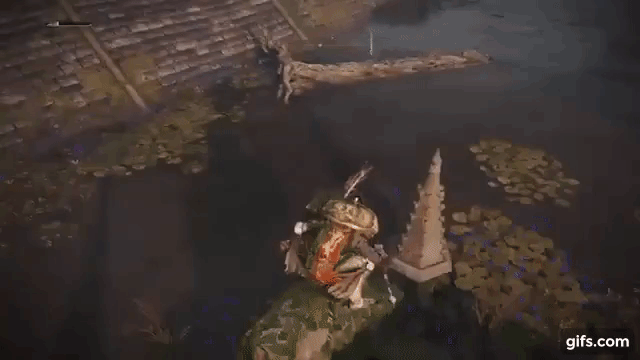
Table of Contents
My Initial Take
Level Design & Art Style
Content
Gameplay
Difficulty
Gameplay x Difficulty = Content
Story, World-Building, & Quests
Parting Thoughts
My Initial Take
As with Skyrim in 2011, The Witcher 3 in 2015, and The Legend of Zelda: Breath of the Wild in 2017, Elden Ring will be the benchmark for AAA Open World RPGs for the next 3-5 years. From Software is currently enjoying the universal acclaim on the RPG fora of the interwebs, and a lovable but hivemind worshipdom has immediately emerged. Upon the release of any open world RPG in the next 3-5 years (looking at you, Bethesda & Ubisoft), this fandom will immediately nit any appraisal of the game with “bUt eLdEn RiNg BeSt GaEm eVurR!” We can only hope From Software doesn’t go the way of CDPR in reaction to its well-earned success, but given From Software has been a studio gently and ambitiously iterating on its formula since 2009 with Demon Souls, and industry consensus on the studio’s management, I’m confident this will not be the case.
But I don’t think this should have surprised me or others paying attention to From Software. This entry into the From Software compendium is:
f(the natural evolution of previous Soulsborne entries + open world + an uncomprising commitment to scale & polish) = GOTY.
That’s pretty much it. From Software just ran the formula and got the predictable outcome.
However, because this has been a long, iterative, esoteric process building upon an engine and team that is incredibly hard to mimic - I do not anticipate major studio / publisher response and replication as per, say, Breath of the Wild → Genshin Impact, etc. To date most Soulsborne games - other than Team Ninja’s Nioh - have been middling AA entries like Mortal Shell. I believe this is due to the high-production value nature / requirements of the genre and the difficulty replicating the From Software operation & sauce.
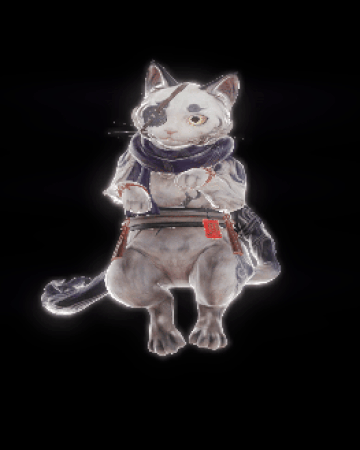
I also am dubious of mobile / F2P-ification success à la Breath of the Wild → Genshin Impact because of the very difficult gameplay, progression, and balance requirements that would challenge a mobile version, competitive multiplayer modes, or a F2P economic model. However, I will explore the potential for F2P and other economic models in Part 3.
As for my take - the most important - this is an artistic magnum opus that just happens to also be one of the best interactive entertainment products made in years. I try to compare my favored titles in a non-contemporary lens, and my general rule of thumb is the length of time I am overawed by my experience and desperate to continue chasing that feeling. By this rule Elden Ring is contender for GOAT. I wish I could induce 2 months of amnesia so that I could experience this game for the first time again.
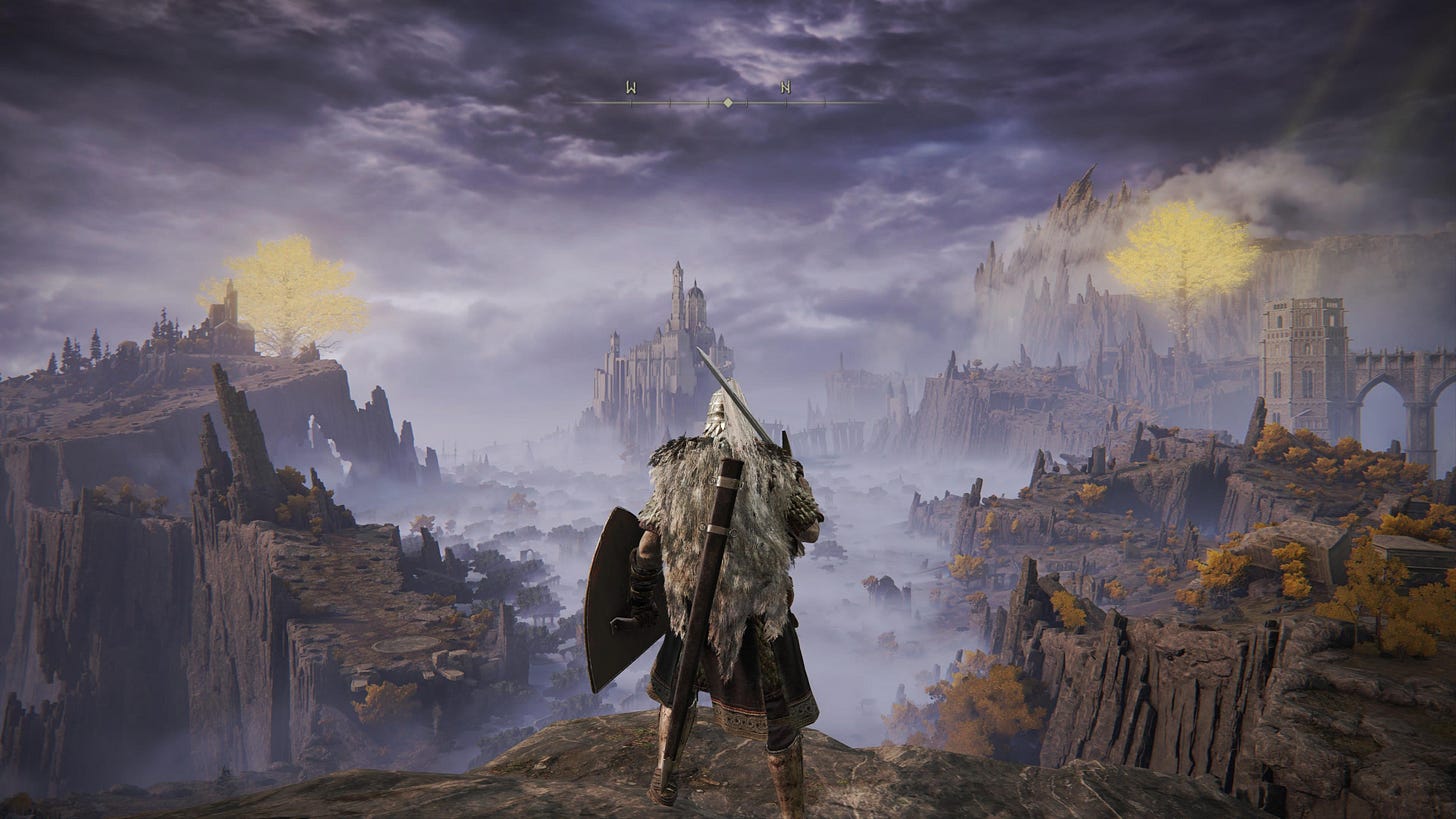
That being said, Sekiro is better. GG trash game go next.
Level Design and Art Style
I believe that these two topics are inextricably linked as I hope the below will self-evidently demonstrate.
The bottom-line biggest innovation of this title from previous From Software entries is the successful transition of Soulsborne level design from the player-funneling branches & nodes level layout (check out this Dark Souls Level Design Thesis) to player-suggesting sprawling open world featuring visual cues on where to head to progress the game, but with few hard limitations on where the player can go if they choose. Given From Software’s curious allergy to telling players anything, executing this player-suggesting required a very thoughtful and disciplined player experience framework when designing the visual and topographical layout of The Lands Between. This was executed *for the most part* masterfully.
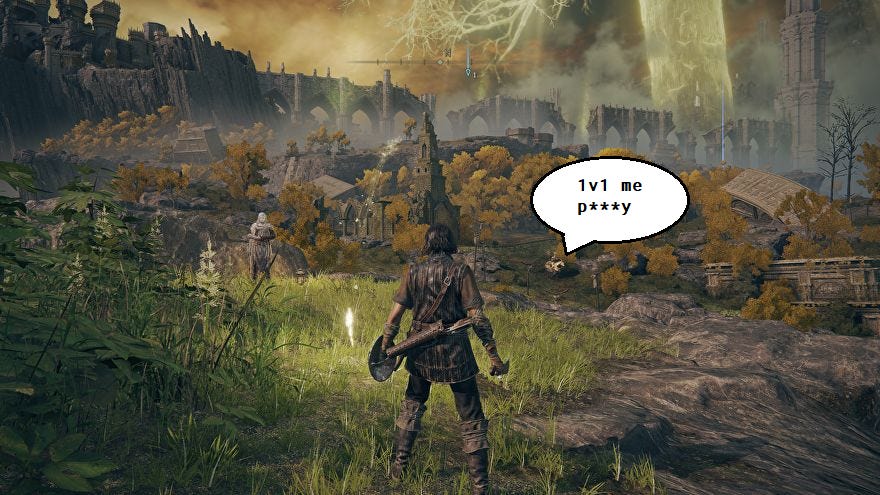
The overworld revolves around The Erdtree, a giant golden tree that has magical powers or some shit. A lot of NPCs worship it or want to burn it. See White Tree of Gondor.
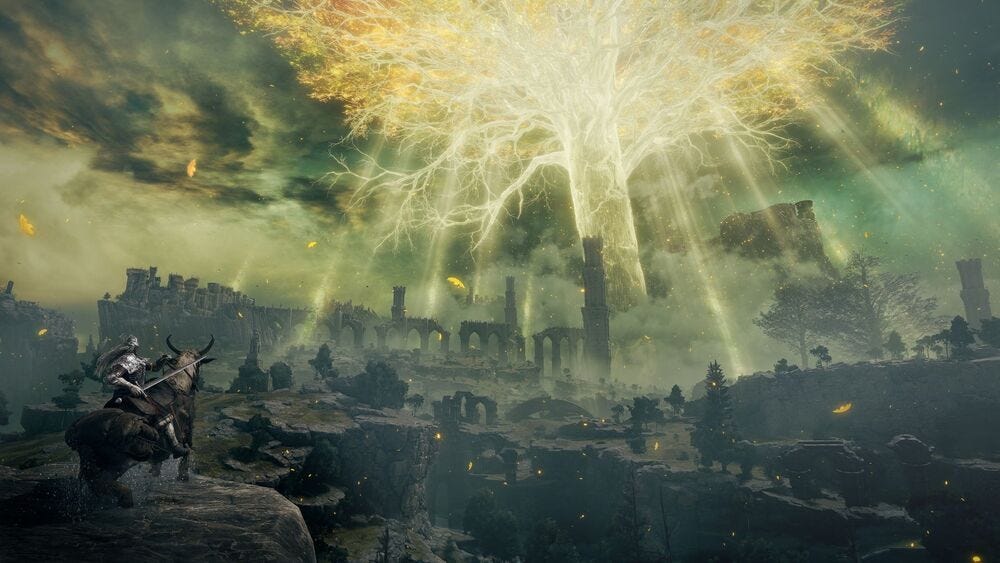
The brilliance of the Erdtree and the world encircling it is that the tree’s visual constancy continually reminds the player of their ultimate destination - the Elden Throne at the tree’s foot - and the player can visually gauge how close they are to achieving this goal. And then you get there and don’t know the game still has 20+ hours of *just* main quest content. The ever-present Erdtree also imbues a quiet sense of urgency into your quest to attain the Great Runes held by the Demi-Gods in their Legacy Dungeons. The Erdtree reminded me of a similar visual progress cue from somewhere deep, repressed in my childhood memory…
…
…
…
...
…
…
The initial vision and the obvious, continual blocking-out of the game world that is evident in this player-suggesting open world design speaks to the sophisticated cross-discipline collaboration of From Software’s level designers, concept artists, environment artists, VFX artists, producers, etc. throughout the game production lifecycle. In smaller biomes and dungeons, the level design approach reverts back to the player-funneling model, exemplified in the outdoor design of Crumbling Farum Azula, which is literally surrounded by tornado funnels.
Common dungeons enjoy design commonality. There are 5 archetypes of common dungeons that follow generally similar art style and level design:
Ruins
Art Style: Dark, grey, Roman ruin, ivy-covered stone brick
Level Design: Very short length (sometimes simply a chest room); straightfoward path; few hazards
Caves
Art Style: Dark, grey-brown, crystal formations, moss & foliage
Level Design: Medium length; winding corridors, careful drops; fall risks, environment hazards
Mines & Tunnels
Art Style: Bright, grey-brown, mining equipment and paraphrenalia, crystal formations
Level Design: Medium length, winding corridors, careful drops; fall risks
Catacombs
Art Style: Moonlit, grey & turquoise, Gothic stone architecture, turqouise torches and stone coffins
Level Design: Medium length; straight corridors, small rooms; lever puzzles; static environment traps
Hero’s Graves
Art Style: Dark, grey, Roman stone architecture, torches and stone coffins
Level Design: Long length; fall risks, moving environment traps
The continuity in art style and level design of the dungeon archetypes slowly conditions the player as they progress through the world on what to expect when facing the challenges of the next, more complex iteration. Larger and unique Legacy Dungeons feature bespoke level design and art style.
Art Style Variety & Notable Examples
Given the scale and content variety of the game, the art style is an eclectic smorgisborg of the Dark Souls medieval fantasy style imposed on an open-world biomes concept, plus a healthy dose of extraordinary creativity peppered around environments and NPCs. Given the game contains a whopping 13 biomes by my count, and significant variations therein, the sheer variety and scale of environment art, flora, fauna, vfx, enemy types, etc. is simply worth praise in itself.
I am not going to discuss the graphical quality of the game because I don’t think there’s anything reasonable to complain about. Instead, I’m going to appraise the creativity of the game’s art style. Because this topic could trail endlessly, I am going to discuss 3 biomes to showcase variance in creative quality throughout the massive world. I am going to give each biome an “Elden Ring grade,” which is to say these are relative to each other but individually almost universally superior to open world RPG comparables.
1. Limgrave: B-
The starting biome hews closest to the Dark Souls medieval trope and represents what I think is the most vanilla - and therefore most boring - of the biomes. Its environs contain jagged grasslands, windswept sea cliffs, lowland lakes and rivers, dillapidated stone ruins, and a spoopy forest. Limgrave is inhabited by fantasy’s prototypical knights, barbarians, demi-humans, giants, bats, wolves, and bears. Limgrave serves as a merciless tutorial of most game features as the new player skitters about obtaining necessary abilities, basic weapons of most archetypes, initial upgrade materials, and frequent bouts of emotional damage.
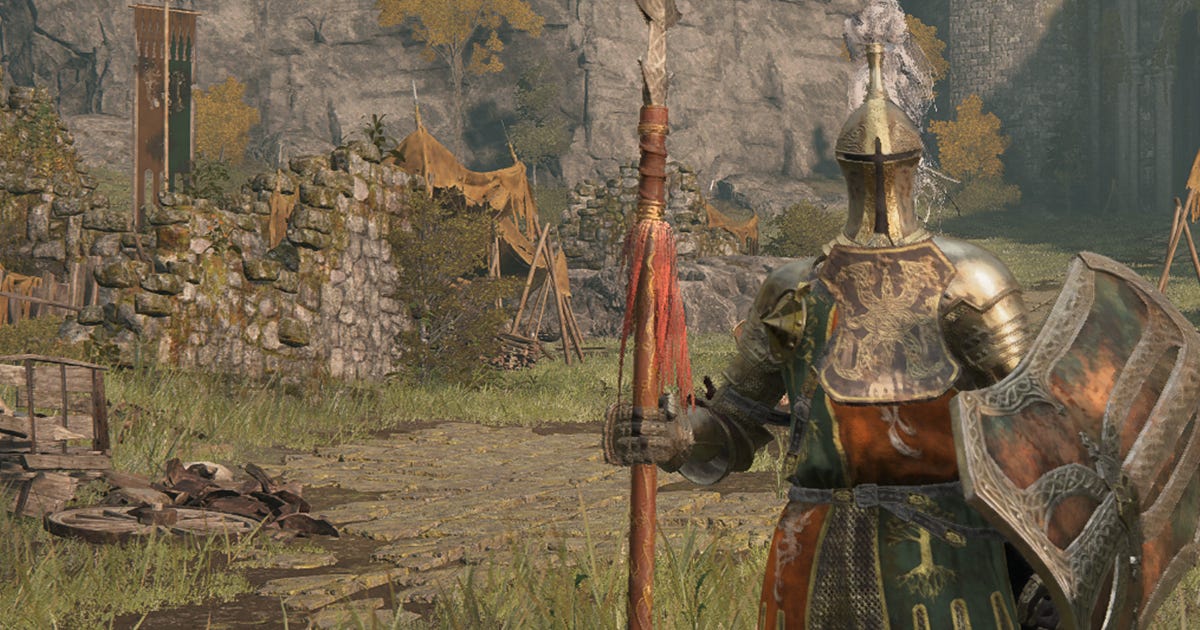
The endlessly winding expanses of dull-green-grey scenery not only wore on my eyes, but also, paradoxically, made the starting region one of the most difficult for me to navigate. Soporific brass and a dull buzz of strings sooth you through the humdrum. There are a few interesting venues within Limgrave that showcase artistic nuance: the grafting chambers of Stormveil Castle with their grisly hanging appendages and piles of corpses, the coastal path and beach featuring the first encounter with freakish land octopuses, the Lake Agheel bonfire party that gets *crashed*, and - my favorite - the Mistwoods with its tree-scratching lesser runebears:
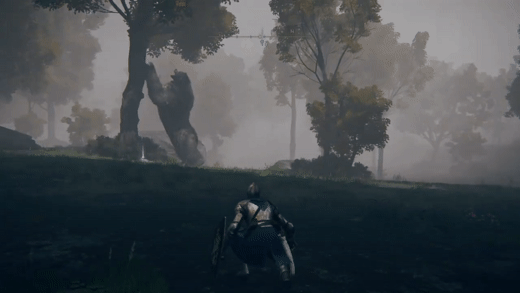
Limgrave gets a charitable B- because I assume that the game’s artistic aim is to create a mundane anchor in the earlier, safer portion of the game in order to promote player immersion and appreciation as they journey into the more fantastical, spooky, or downright hellish biomes.
2. Altus Plateau: A
The plateau, reigning high above the earlier biomes and reached via an epic elevator ride, embodies the physical and psychological approach to the player’s goal of the Erdtree. Golden planes are pocked with trebuchet craters, and decimated military camps bar the player’s path as they serpentine through the roads and paths rising toward the gilded Leyndell Royal Capital. Along the crumbling stone roads, a haunting forest and not-so-friendly villages beckon the player’s detouring. The final dash to the Capital gates are met with missile barrages from a desperate platoon or, if you take the straight path in like an absolute Chad, lots of very big and angry knights.
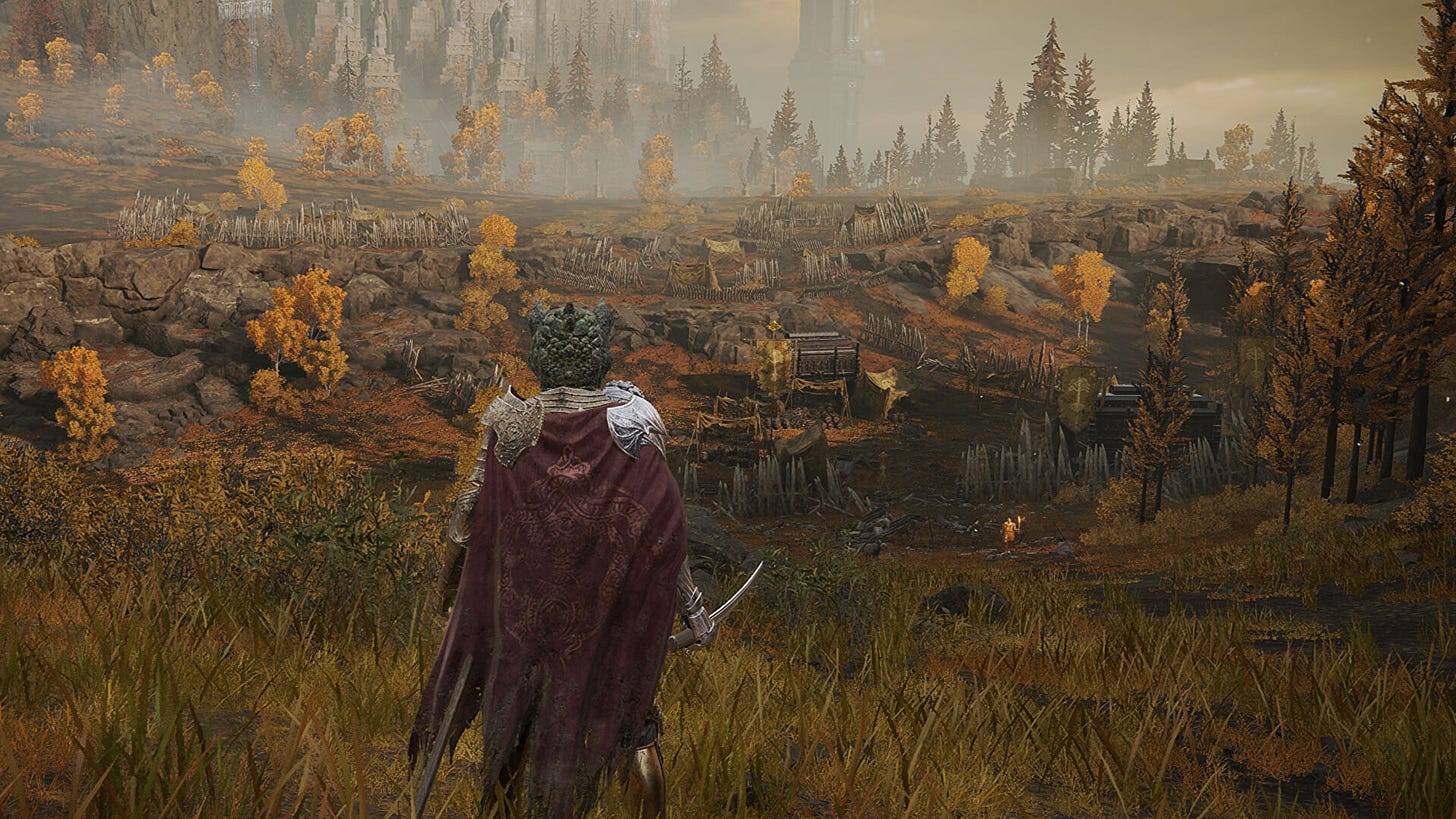
As the player breaches the outer gates of the Royal Capital, they are greeted by the aftermath of a medieval Verdun. Passing over craters and around giant golem halberds impaling the memories of a failed siege, the disembodied voice of a familiar foe carried on the wind mocks the player “I see thee, little Tarnished.” Feeling Sauron’s Gaze upon him and spurring Torrent toward the barred Royal city, futility and insignificance seemed to overcome the aged samurai Bobbyblack. This haunting moment was la pièce de résistance of my Elden Ring feast.
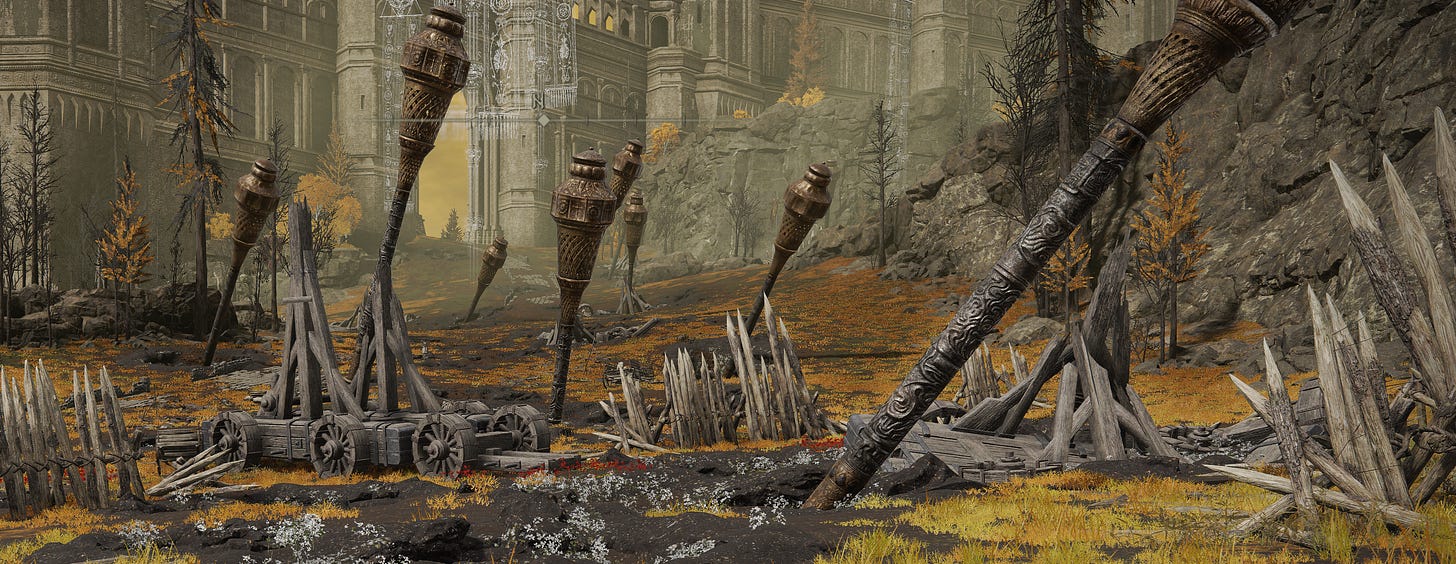
What captivates me in particular about Altus and the approach to Leyndell- and maybe folks with a military background are partial to this- is the pervasive notion that the once-proud but scattered & tired royal forces just don’t want to be there. The haunting winds and strings, 100s of soldiers sitting around, and a shining but battle-torn landscape communicate most poignantly the ongoing impact of The Shattering and the endless war the denizens of The Land Between have been consigned to. Altus gets an A because the elements of environment art, character art, audio, and scripted events coalesce to create a forlorn mood that- more than all the preceding disjointed narrative exposition- immerses the player in the post-apocalyptic nihilism of this world.
3. Caelid: S
H.P. Lovecraft, Jurassic Park, and Chernobyl combine to birth the most ghastly continent of waste ever devised in a AAA game. Caelid is not a place- Caelid is an all-consuming terror that never abates even as you traipse about the Rot as a level 713 sweatyboi. But I was not level 713 when I first encountered true horror. At level ~25, bored at probably 2 a.m., alone, on my second night of play, I galavanted into the land of rot and crummy without the faintest clue what awaited - I mean, it’s right next to the starting area, right?
I was not prepared.
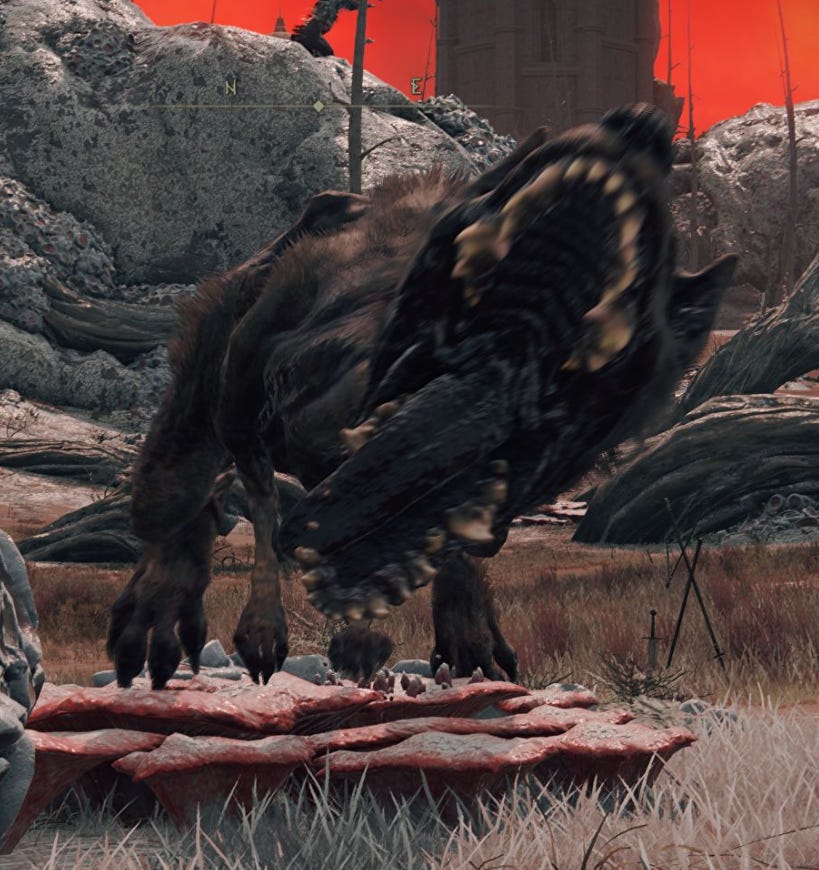
I spent most of the first couple of hours in Caelid mashing B and spurring Torrent whenever any man, beast, or thing glanced at me. I emerged 2 days later a level 65 scarred but unbroken man. And it turns out the recommended minimum level for the beginning part of the region is 60. I had cleared most of Dragonbarrow (rec. level 100+) before I stumbled out of Radahn’s plagued redoubt.
I remarked to my friends and colleagues that I think the character artists for Caelid need to seek therapy. The visions of hell that took these poor souls hundreds of hours of iteration on could only have haunted their off-hours and dreams. That being said, I applaud their sacrifices for the millions who have been able to experience the terrors of the giant dogs, giant crows, skittering prawns, and decaying dragons.
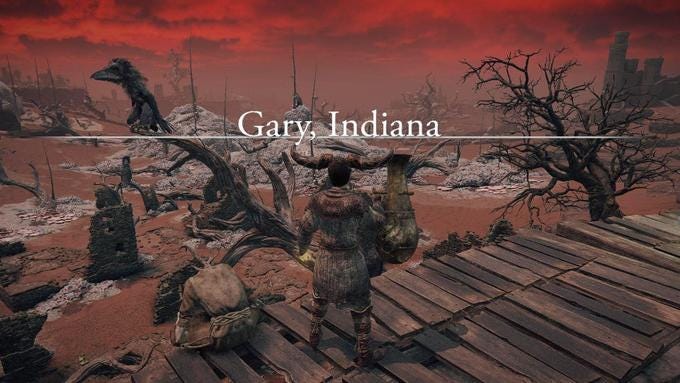
Caelid is a biome that allegedly resembled its mild neighbor Limgrave before Malenia - that bitch - nuked the region with the dreaded Scarlet Rot rather than face The People’s Hammer General Gigachad Radahn. The land has since been a red, dead, rotting swamp surrounded by giant skulls, jagged dragon-strewn outcroppings, and millions of infectious and repulsive mushrooms. The Rot devours the living in a hideous fashion, eating their innards and minds until they transform into mindless mushroom-sprouting automatons.
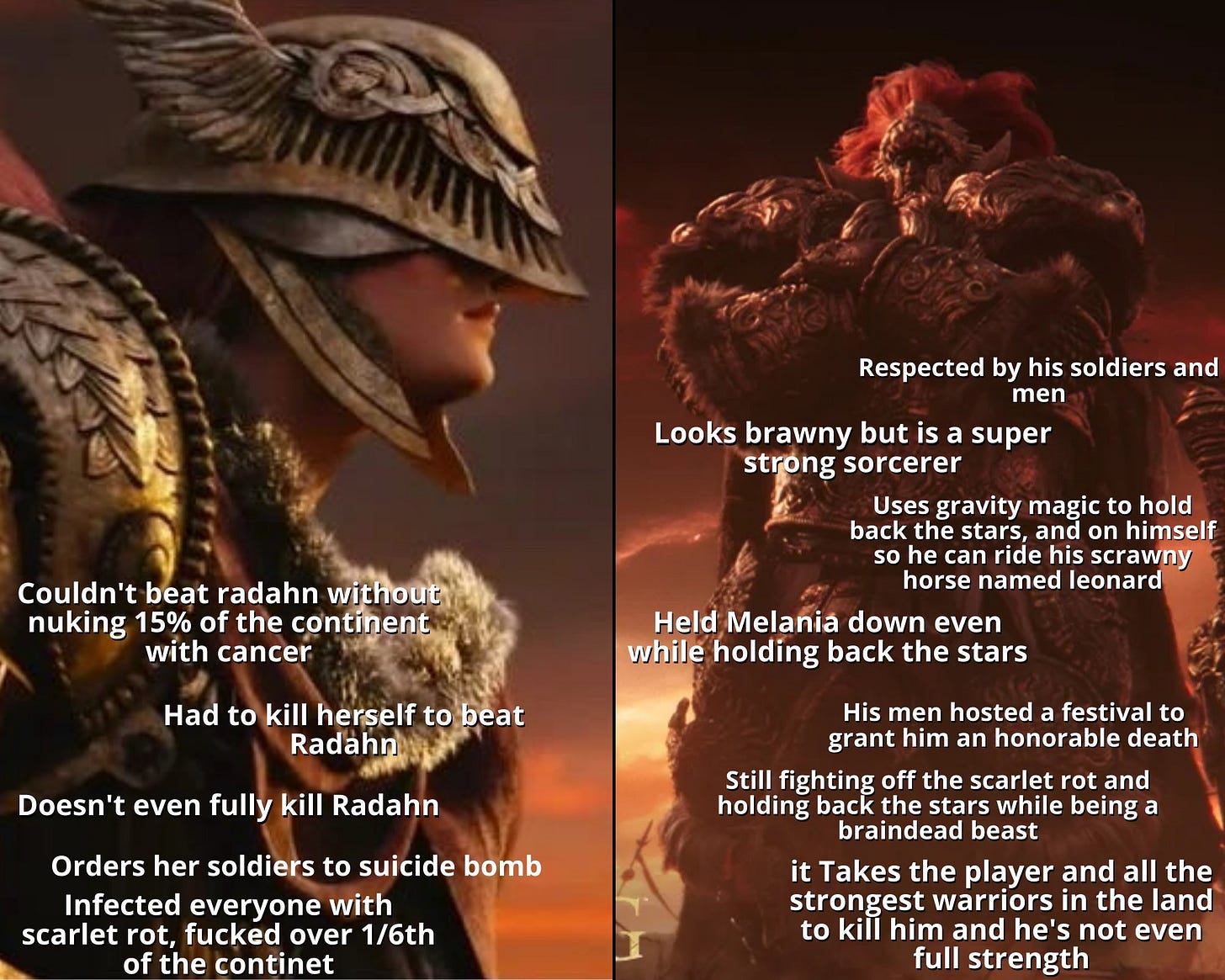
The dwindling forces of Radahn beat back with fire the endless hordes of The Rot’s hungry husks and overgrown beasts. The path is continuously obscured by mounds of mushrooms, twisting roots, crumbling ruins, rotting geysers, and massive skulls that all keep the player on edge about what monstrosity lays around each obstacle - and the player is rarely disappointed. The staccato strings and unnatural sounds permeate the misty red air, interrupted frequently with an ominous drumroll informing you something is coming. Time to start mashing B.
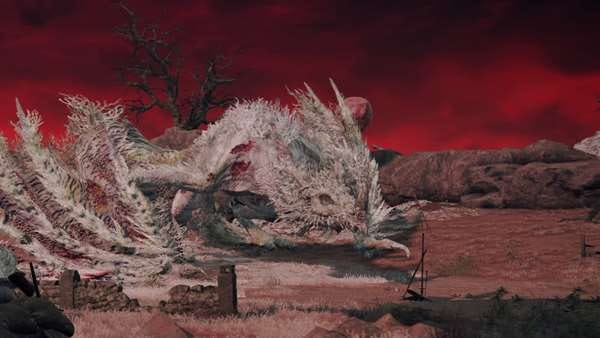
Had I not ventured into Caelid so early in my first playthrough, massively under-leveled and determined not to leave, I don’t know that it would have made as deep an impression as it has. That being said, I objectively assert Caelid is deserving of an S due to its uncomprimising, horrific uniqueness. Couple that with a compelling back-story and memorable inhabitants, and I posit this region will be Elden Ring’s most influential within the Soulsborne pantheon. It took true creativity to put this god-forsaken place together, and I applaud From Software’s concept artists in particular.
Honorable Mention - Crumbling Farum Azula: S-
Content
Elden Ring is BIG. In raw area, Elden Ring is larger than Washington D.C. and nearly the size of Barcelona. Running on foot from Castle Morne on the southern tip of the Weeping Peninsula to the Forge of the Giants in the furthest reaches of the Mountaintops would take the better part of a full day. And as you make that marathon, the ever-present Erdtree towers over you at a whopping 5 km tall. The horizontal and vertical expansiveness of The Lands Between physically represents the daunting challenges faced by the silent Tarnished protagonist.
But far more impressive than the raw size of Elden Ring is the almost inexplicably rich trove of hand-drawn, hand-placed, polished content stuffing The Lands Between. Very little of the continent is relegated to filler - nearly every nook has a mysterious dungeon and every cranny a monster to be fought or a material to be gathered. Just a by-the-numbers list of content in Elden Ring is staggering:
13 Regions
6 Legacy Dungeons
10 Large Dungeons
> 50 Minor Dungeons
33 Weapon Classes
~80 Armor Sets
> 170 Spells
~120 Bosses
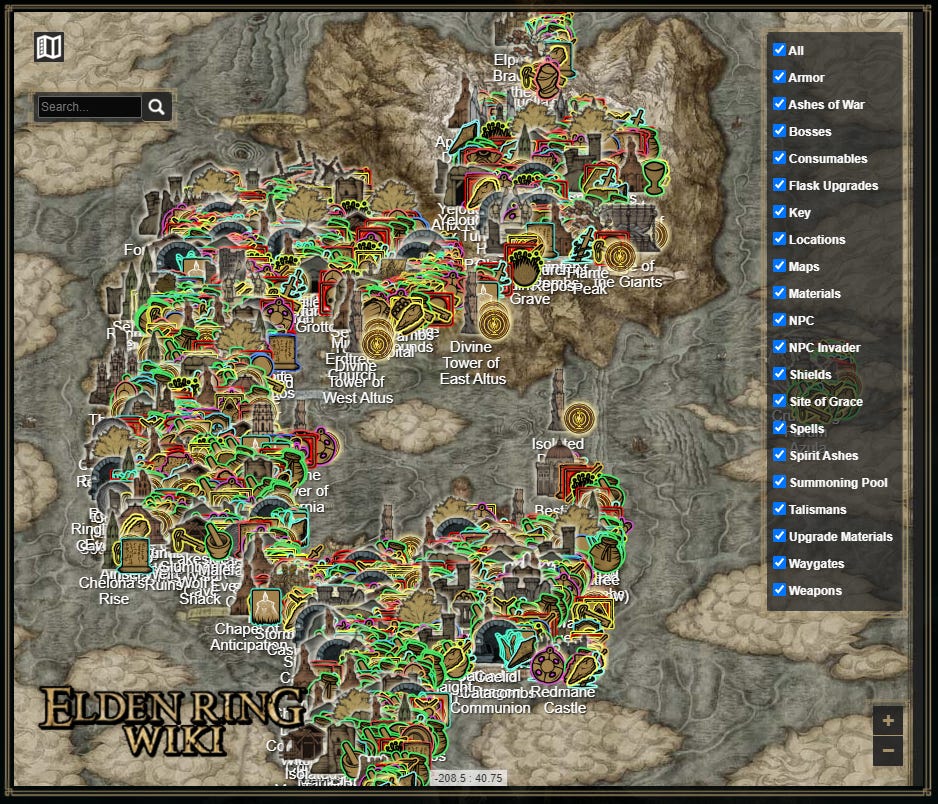
The total bang-for-your-buck content in Elden Ring was best transmitted by 39Daph as I had her 1st playthrough on in the background. Asked in a donation message whether Elden Ring was worth $60, Daph immediately replied, “If ever there were a game worth $60, this is the game.” Many popular entrants in the open world RPG genre come under criticism for the value proposition of the content offered. This debate has been completely absent for Elden Ring.
For the median open-world RPG player, it is estimated that it takes 50 hours to complete the main story and well over 100 hours to attain all achievements for the game - and all of this if the player is progressing at a steady, intentional rate. But the thing is, most players are not attempting to beeline to the Elden Throne or to a platinum achievement. Elden Ring is designed to be explored and enjoyed at the individual player’s pace, and given that design coupled with the difficulty the vast majority of players will experience throughout The Lands Between, this content won’t be exhausted in the popular square for some time yet - as of this writing Elden Ring is still in the top ten concurrent viewership on Twitch.
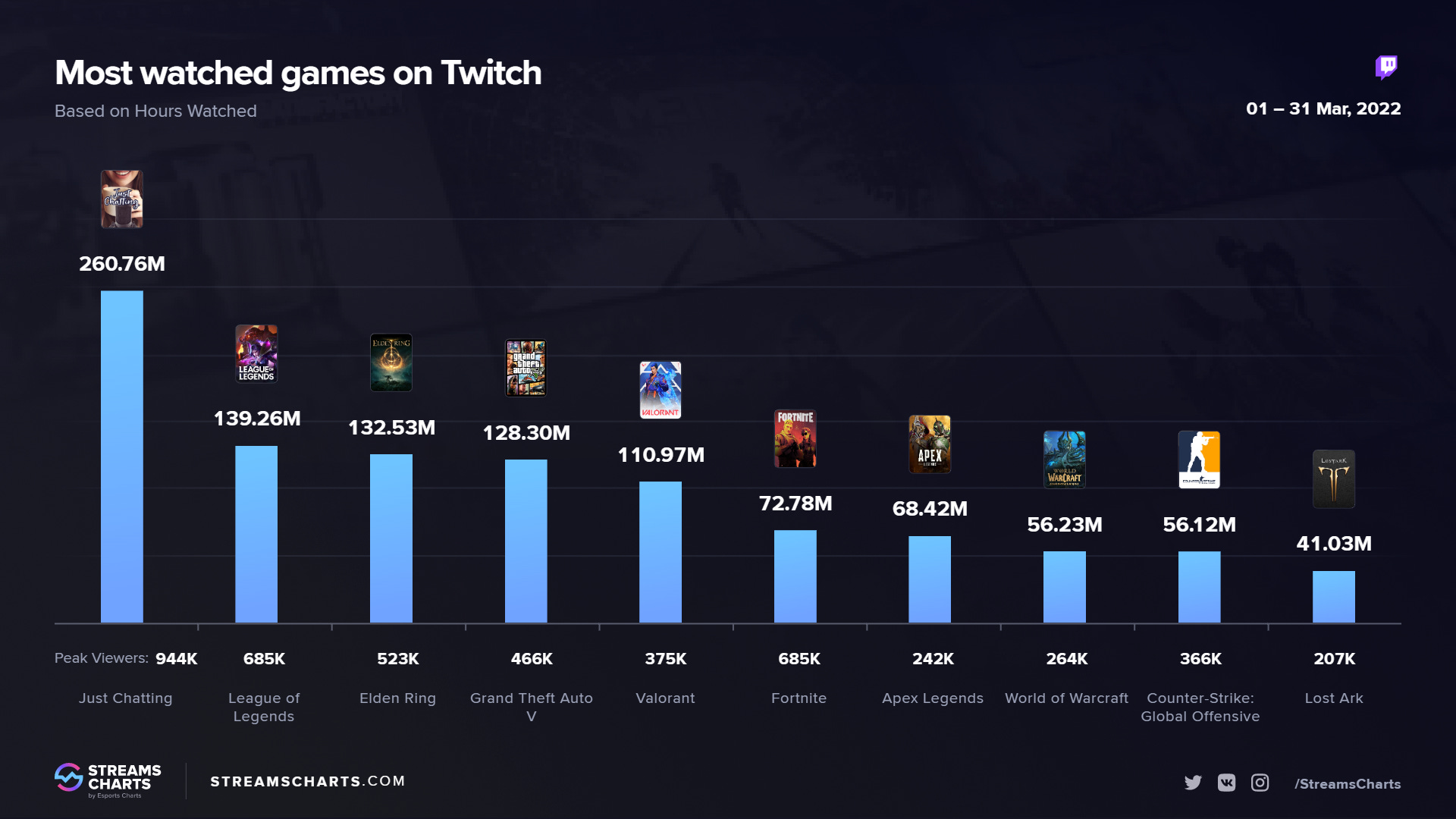
There is so much content in Elden Ring that by the time I made my 2nd character- about a month after starting- I had almost completely forgotten the layout of the starting area Limgrave and certainly the routes of its various dungeons. Moreover, many players will keep playing the game after completion (me), starting new builds of characters and approaching content in new, challenging ways. Let’s circle back and check total hours played by all Steam users next year.
The sole aim of this section is to put basically every AAA open world RPG studio on notice. I don’t think game developers thought this amount of hand-placed, polished content was even possible to produce within Elden Ring’s assumed time and budget. The game development world is waiting with bated breath for future interviews with the production, art, creative, etc. directors to understand just how they created this much content within the constraints of time, quality, budget, balance, pipeline, etc. etc.
And AAA open world RPG developers and publishers better take notice. The continual griping among core RPG gamers of lack of content could be more-or-less ignored in the meta of the late 2010s and early 2020s, during which most AAA open world RPG titles were constrained in their scope and ambition to within generally understood margins. Customers simply will not accept a return to status quo ante Elden.
Gameplay
For the purposes of this article I will only be discussing major innovations to the gameplay of Elden Ring vis à vis previous From Software titles. If you would like a comprehensive description of Elden Ring gameplay, I recommend this 20 minute gameplay overview. There are two major innovations to Elden Ring, which inherited most of its systems from Dark Souls 3 while shucking off the experimental elements of Sekiro, including the grappling hook, prosthetic abilities, and ledge hangs. Those major innovations are the introduction of mounts (Torrent) and summons (Spirit Ashes).
Mounts
No From Software title since Demon Souls has featured the permanent ability to summon and ride a mount. Torrent, bequeathed to the player by Melina near the beginning of the game, is an integral feature of Elden Ring’s world, level design, and combat. For most of the overworld outside of dungeons, and for vast swaths of the underground areas, the player is able to mount Torrent at a whim and dramatically increase movement speed, escape from ambuscades, and navigate obstacles (such as rot pools, siege weapon encounters, etc.). Just in terms of raw mobility, Torrent is a welcome addition to a series historically defined by clunky jogging-through-molasses and frantic dodge-rolling.
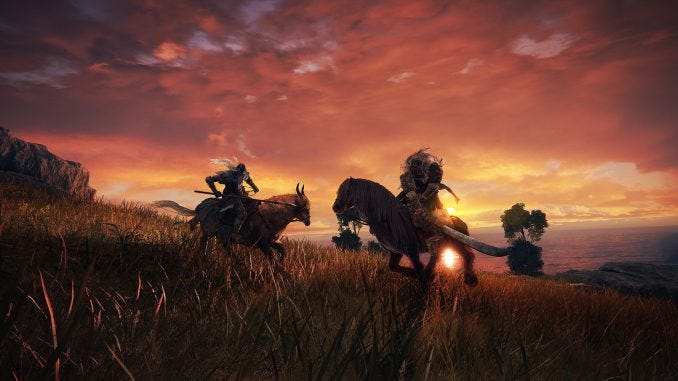
As far as world, Torrent unlocks the beeg. Elden Ring is 79 sq km, which is larger than the map of Grand Theft Auto V. Traversing a world that is an order of magnitude larger- at least in raw surface area- than previous From Software entries requires a more expedient mode of transportation than your two Tarnished feet. Torrent is a clear necessity to enjoy exploration in a The Witcher 3-sized world with 10x the traversal obstacles. I can’t imagine navigating the massive slog of the Lake of Liurnia without my boy Torrent - it would simply be unfun world design.
Additional level design possibilites are unlocked by the inclusion of the double-jumping steed. Torrent adds a substantial verticality traversal to The Lands Between, which clearly shows in the jagged sheer rock faces that criss-cross the overworld, jutting-stone jumping paths, and all those helpful messages along the cliffs surrounded by bloodstains and messages coaxing you to “try jumping.” The double-jump controls are relatively smooth once mastered, and successfully navigating tight jump sequences littered throughout the world often rewards the player with secrets, shortcuts, and other salutary outcomes. Finally, my favorite traversal innovation is the spirit spring- wind geysers that provide extreme vertical displacement via a very satisfactory animation.
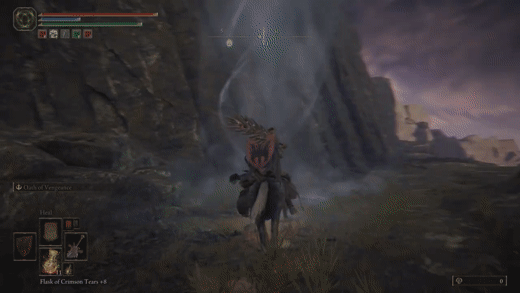
Probably less immediately obvious than as a mode of transportation, Torrent provides innovation to Elden Ring’s combat and an additional vector of difficulty to be exploited in combat design. Horse combat is slightly clunky, but mobility provides an interesting and often convenient modality for chopping through common enemies, such as footsoldiers, as well as a much easier method for defeating larger enemies such as giants, land octopi, and giant crabs by avoidance of their large area attacks. Sometimes it’s enjoyable to practice charged attack timings on hapless groups of soldiers, dragging a weapon sparking along the ground and releasing an attack upward into a crowd of trash mobs at the perfect moment. Perfecting the somewhat clunky timing delivers a feeling of mastery, even if the potential unlocked is essentially useless.
As a vector of difficulty, especially in boss fights, From Software has leveraged the introduction of Torrent to masterful effect. Countless variations of bosses and difficult mobs, nigh-trivialized in overworld encounters by the use of slash-and-gallop tactics with Torrent, are re-introduced in mount-less encounters. Galloping in during an opening, letting off a charged attack, and sprinting frantically away is a valid strategy for many of the overworld bosses. Repeated indoor or Torrentless variants force the player to adapt to the boss’ tactics without the benefit of the aforementioned slash-and-gallop cowardice.
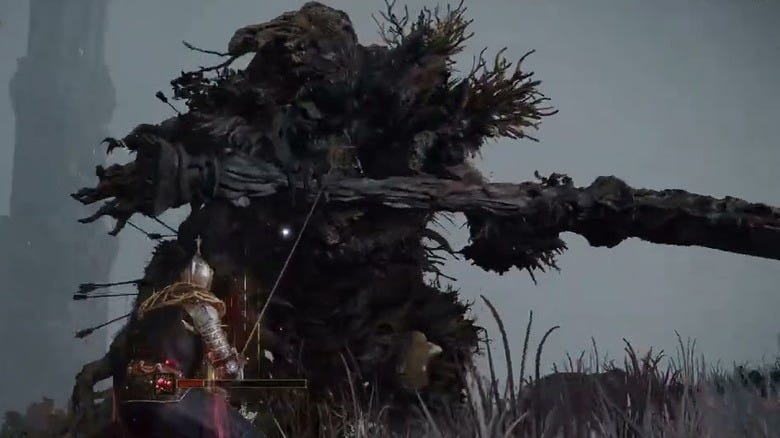
One of the best examples of this, and a boss that left an indelible impression on my level 45 Samurai when he defeated it horribly underleveled (23 attempts), is the Putrid Avatar. First encountered beneath a dying Erdtree in the pestilent Dragonbarrow, the Putrid Avatar has a number of attacks that require the player to book it. One such attack, in which it sprays Scarlet Rot in a wide hemisphere in front of him, can be avoided simply by galloping directly away from it on Torrent during the Rot effect’s duration. Now I still fought the Avatar on foot like a dummy, but fortunately that prepared me well for the second encounter with this monstrosity.
At the Haligtree, a Putrid Avatar patrols a narrow corridor, guarding key items and a route forward. Without the mobility of Torrent, the player must avoid sprays of Rot in a tightly enclosed space while avoiding the Avatar’s long-range holy attacks. A very unpleasant upjump in difficulty to be sure, but by understanding the attack patterns of the Putrid Avatar from his earlier Torrent-enabled iteration, the player at least knows what to expect in the more difficult encounter. Torrent’s function of providing a less difficult, familiarizing experience with bosses in the overworld is a masterful use of the mount innovation within Elden Ring’s difficulty and world design.
There are plenty of ways From Software could further develop its mount system in future titles, including the obvious introduction of upgrade systems. I have thought up an idea that might be worth exploration (in my opinion, at least) to shake up gameplay.
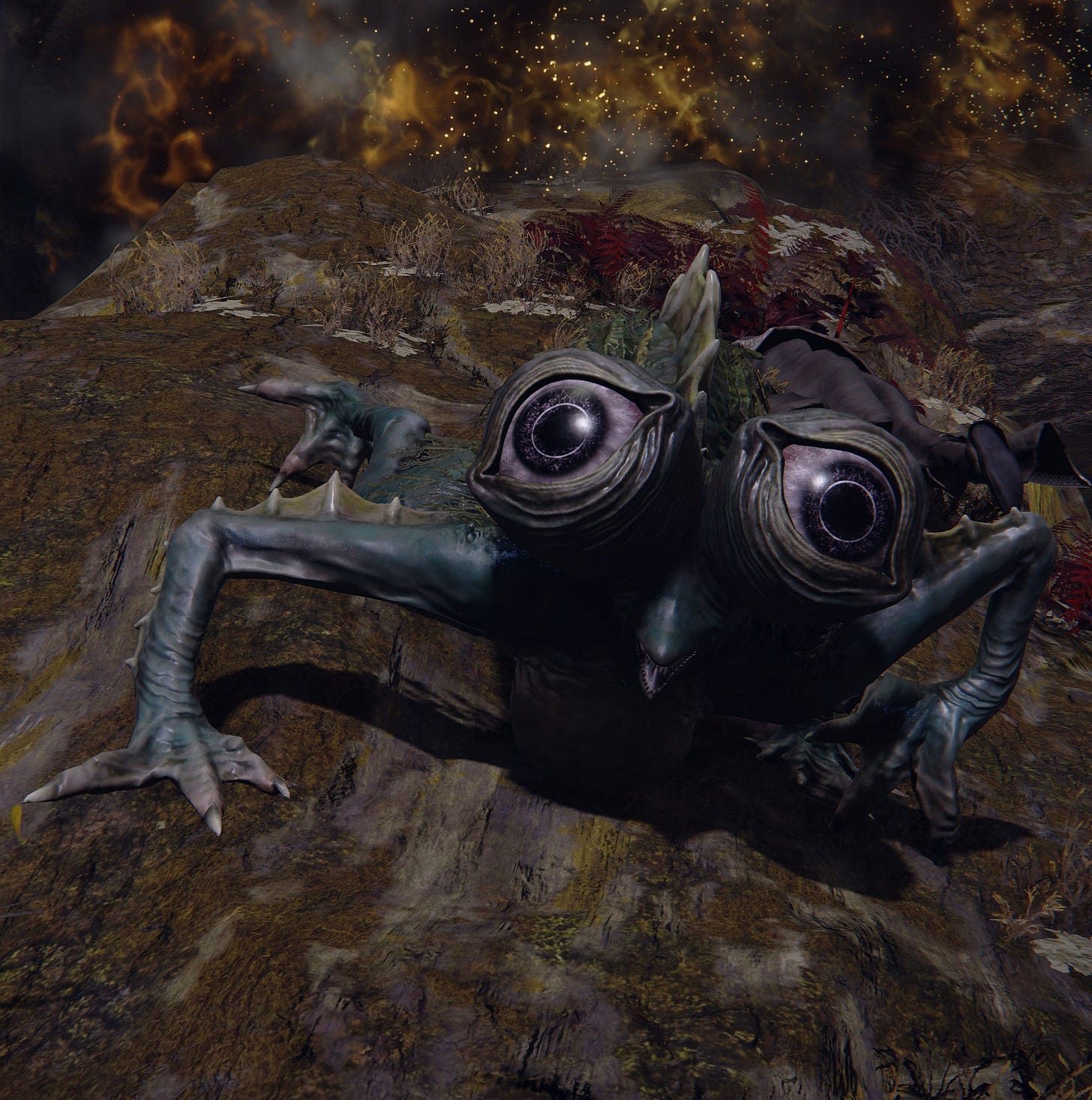
Everyone loves basilisks. Ask anyone in the Elden Ring community. Great design, fun to fight, so cute. But what if you could ride a basilisk? Now wouldn’t that be something?
Basilisks are infamous for spewing smoke around them that inflicts the Death status on the player and upon build-up instantly kills the player in a truly horrific animation. Leveraging its innate ability to afflict Death and its resistance against the same, taming a basilisk could unlock new modalities of combat and exploration. For combat, it would be obviously extremely satisfying to watch a group of footsoldiers horrendously impaled by death spikes and listen to their pitiful wails as you hop around goofily on your cute slimey steed.
But what if From Software designed an entire area around a status attribute, say a lake full of Rot? Ah, they did that you say? Well how about an entire Death region, which to access requires lasso-ing and riding a basilisk? Much like the Varia-Suit for Samus being prerequisite to exploration of the hellscape Norfair, a basilisk would be the only thing between the player’s rear and instant death as they explore a Death Caelid. The player would be in continual fear of being dismounted, and the environment could be peppered with skeleton snipers and bow golems intent on a controller-throw high score. Through travails across a black swamp of insta-death, perhaps the player could even come to… love… a creature such as the slimey basilisk.
Summons
Soulsborne games have long featured the ability to call other players to your world either to assist you, or, more often, to kill you and T-bag your corpse. However, when fighting enemies in a single-player experience, players have until Elden Ring never been able to conjure at-will the assistance of non-player characters (there have, however, been many scripted fights with assisting NPCs). One of the calling cards of Elden Ring’s marketing was the introduction of spirit ashes, abilities acquired throughout The Lands Between that allow the player to summon various spirit creatures and humanoids in most areas of the world.
Elden Ring features a wide variety of summons, over 60 in total. Each can be empowered from base level up to +10 levels with Grave and Ghost Glovewort acquired in catacombs and other dungeons. Summons can range from packs of wolves to solitary knights, from archers to mages, and even from poison-spraying jellyfish to Scarlet Rot-imparting hounds. The variety of summons and ways to invest create theorycrafting potential for supplementing character build weaknesses in unfavorable boss encounters, complementing damage sources, or increasing the frequency of procs like hemorrhaging. Additionally, the simple fact that summons can attract the attention and attacks from enemies is a massive boon to the player’s ability to attack bosses unmolested, retreating when the boss shifts its gaze. For the more robust spirit ash companions, the player can count on their health pool as an additional resource in taking down a particularly difficult boss.
However, the entire summoning system and its variety are obviated by a *still* completely broken entry - the Mimic Tear. Mid-way through the game the player can go acquire this ridiculous spirit ash. The Mimic Tear completely replicates the player character’s attributes, equipment, and abilities, has far more hit points, and has a highly aggressive behavior. The Mimic Tear, especially once upgraded, can solo many of the game’s more difficult encounters and render those it can’t an order of magnitude simpler. Upon acquisition of your stronger version of you, the entire summoning system, with the months of design work, character art, and balancing, is rendered obsolete.
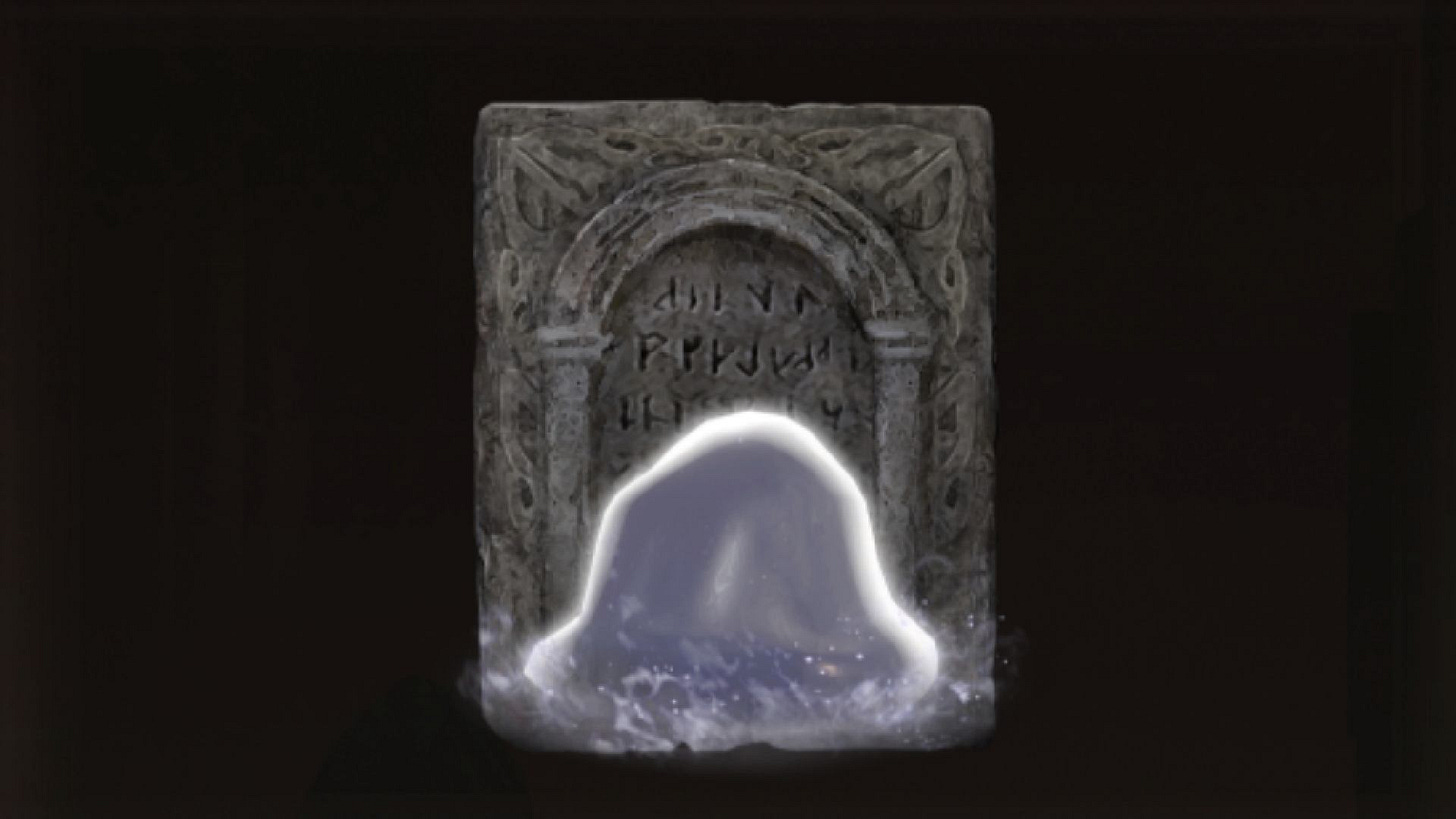
From Software needs to remove mimic summon from its next Soulslike entry. The summoning system has dramatic potential to generate bespoke player experiences, interesting theorycrafting, and replayable content if tuned *at least somewhat properly* to the challenges the player faces in the next world. I would love to see a summoning system that encourages a player to make opportunity-cost investments (Ashes of War, upgrade materials, attribute requirements, etc.) in various summons and sub-specialties, for example buffing a pack of wolves with poison damage, in order to make the system as engaging as Elden Ring’s weapon system- the scion of a decade of From Software iterations. I look forward to speccing into a pack of whip-cracking flying bleed marionettes.
Mount x Summon
As both Torrent and spirit ashes provide additional vectors of difficulty in gameplay design, combining them both and ripping them away from the player later can create some truly harrowing re-encounters. I will showcase one example.
The Draconic Tree Sentinel is first encountered outside of the Royal Capital and must be confronted and defeated to enter. For this instance, the player is allowed to use both Torrent and spirit ashes. The Sentinel’s weapon slams have an extremely large area of effect, so galloping away as he winds up generally extricates the player from incredible lightning, strike, and posture damage. Additionally, summons can both distract the Sentinel while the player heals or uses ranged attacks, and the summons can deal damage while the Sentinel targets the player with ranged attacks. Though potentially the most difficult encounter the player will face by this point, the Draconic Sentinel can be managed with planning and maneuver given the resources they have at their disposal.
Not so as the player approaches the penultimate encounter of the Crumbling Farum Azula. On the Great Bridge leading to Maliketh, the player discovers their summon and Torrent abilities grayed out as the Draconic Tree Sentinel guarding the sanctum menacingly descends to greet them. All of the mobility and distractions the player enjoyed in Leyndell do not avail them against the nonstop onslaught of giant area attacks, mercilessly accurate fireballs, and unforgiving lightning strikes.
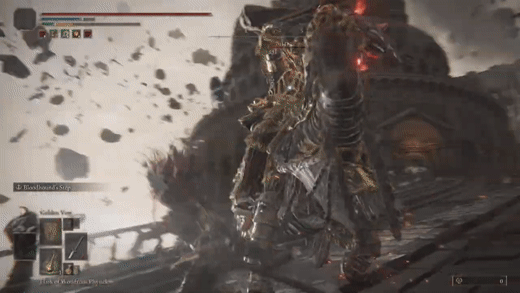
However, upon defeating the Sentinel mano y mano, the player recalls the relative ease by which they dispatched the previous iteration and develops a sense of pride and achievement at having overcome the Sentinel in ‘fair’ combat. The difficulty vectors enabled by the innovations of Torrent and spirit ashes give the player an earned sense of skill and mastery as they progress through the increasingly difficult Lands Between. Additional difficulty vectors that From Software can innovate in future titles will generate more encounter variability that will increase content permutations.
Difficulty
NOTE: If you are unfamiliar with difficulty in Soulsborne games, this article just published by Alex Kubodera is excellent Designing for Difficulty: Readability in ARPGs.
Much ado has been made by streamers, reviewers, friends, the internet - that Elden Ring is a very difficult game. My contention is that Elden Ring is not that difficult as designed. I keep hearing the braying of comers-new that Malenia - that bitch - is the most difficult boss they have ever fought and the most difficult boss of the Soulsborne genre.
Bullshit. I present to you:
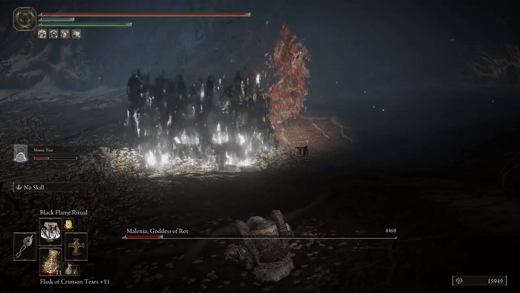
Cue the adjustment of monocles and mashing of keyboards. But Rob you’re not playing the game right! You can’t use MIMIC TEAR! That’s ChEaTiNg!!! You’re supposed to level 1 Wretch club her to death or else it’s not a REAL Malenia - that bitch - fight!
I’m a pinkies-out melee-only boy myself. Magic users are sick, lonely people who should probably be on a watchlist. That being said I used Mimic Tear on my first playthrough and first-tried that bitch. GGEZ next game.
But read what I wrote above: Elden Ring is not that difficult as designed. The player in the above clip is playing the game precisely as it was designed by From Software and is trivializing the most difficult encounter in the game. And if there is any truism in gaming, it’s that players on the internet will find ways to use systems to trivialize otherwise difficult content. Hell, they will spend days finding unintended systems to trivialize content:
You know who is difficult by design? Isshin, the Sword Saint. It took me 3 days and 47 tries to beat Isshin, the Sword Saint.
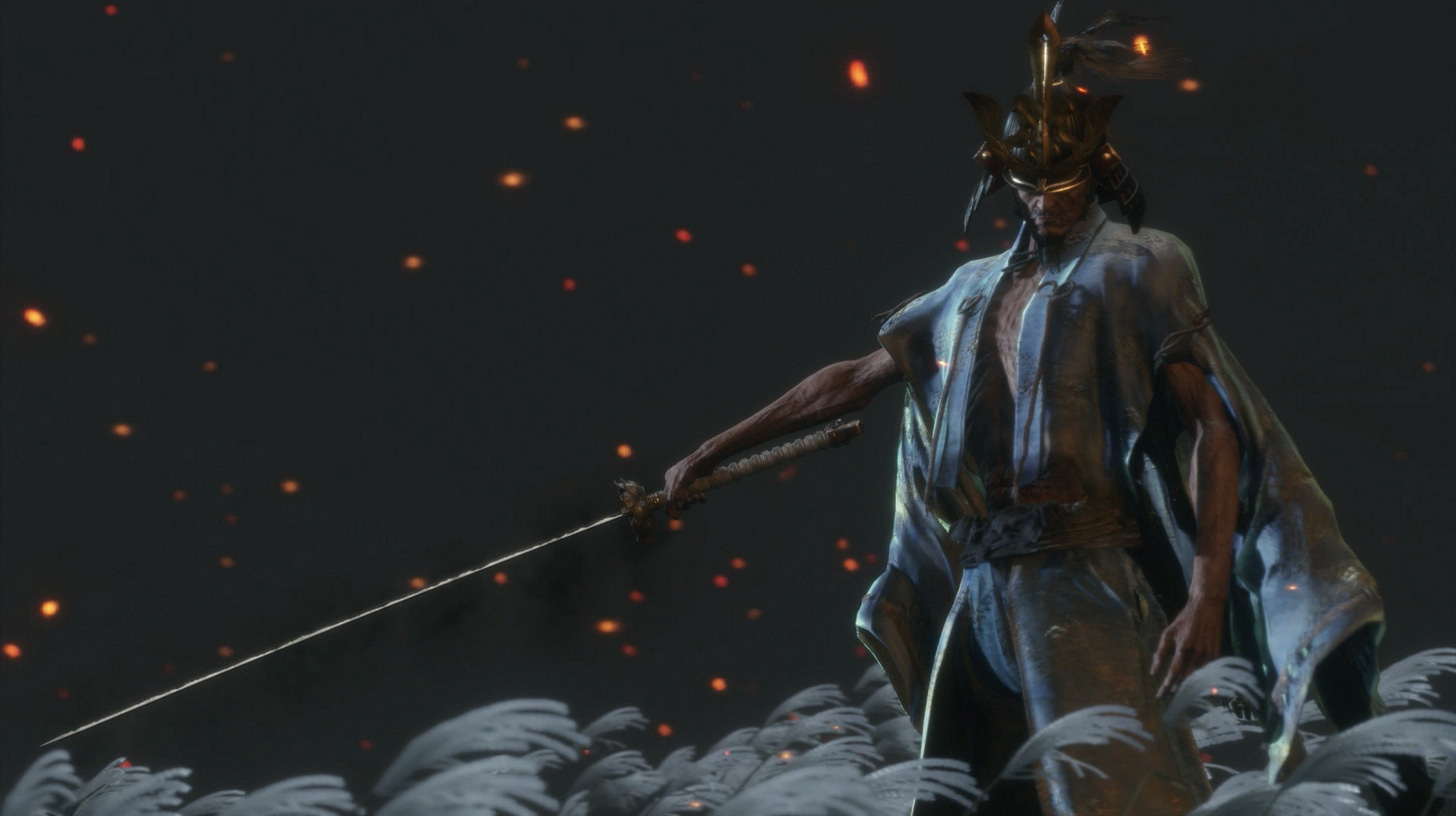
Instead of Reddit-tier quibbling that would be the result of just leaving it here, I will demonstrate with science and shit that Isshin of Ashina is more difficult than Malenia - that bitch:
Elden Ring allows many more avenues of preparation than Sekiro to increase not just total raw player character power, but also situational itemization and abilities to exploit particular enemies’ weaknesses in much greater frequency. I don’t think it’s necessary to list out and explain the differences in attributes, equipment, and items, but needless to say Elden Ring has a LOT more options.
Not only that, but all of the most difficult bosses of Elden Ring allow either the summoning of Spirit Ashes (Mimic Tear) or another player to aid you in defeating the enemy. Even if playing Elden Ring completely offline, a highly-upgraded Mimic Tear can solo most of the game’s difficult content (though it has been nerfed significantly). In Sekiro, there is often no other option than to just git gud.
While I am at it, let me spoil for you the most difficult content in Elden Ring:
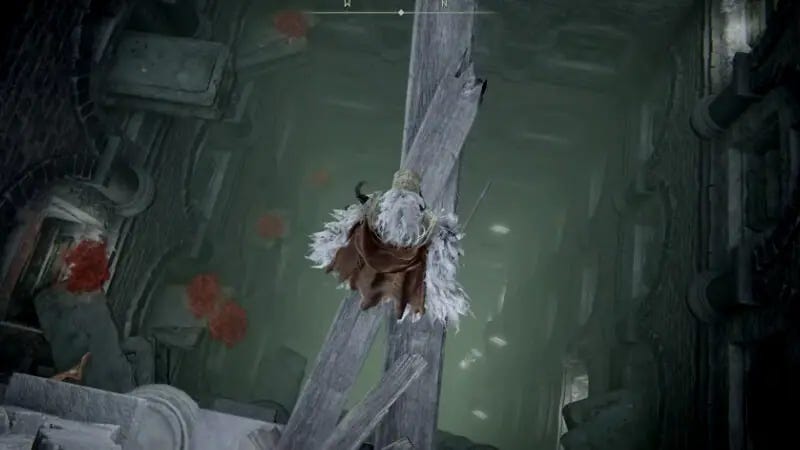
Gameplay x Difficulty = Content
So if you were at any point frustrated reading the previous section, and I suspect many of you were very frustrated, I did my job.
That’s because the difficulty in Elden Ring (and other Soulborne games) IS content. And it is content you can choose to engage with or not, depending on how much preparation you are willing to commit to or players you want to summon to your world. Utilizing the previous section to make this point, here’s one LobosJR beating Malenia solo at level 1. There are plenty of people who make Elden Ring extremely difficult *for themselves* and a massive community that will engage with such content.
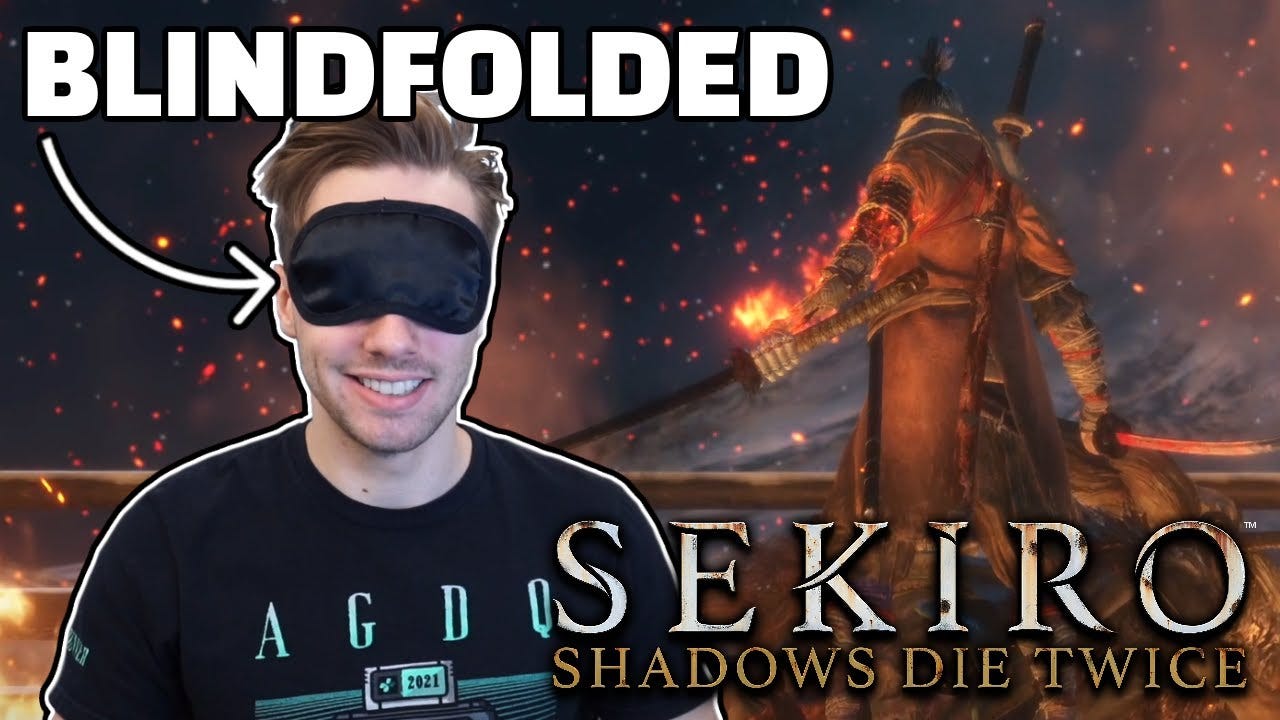
Elden Ring is a hardcore RPG player’s sandbox of difficulty (credit Mike Heywood). Some people use magic. Some people don’t. Some people go no summons. Some people summon another player for every boss. Some people use the internet to spoil every possible surprise for themselves. Some people scrupulously avoid the internet their first playthrough (I recommend this for my more hardcore RPG inclined friends).
Entire sub-cultures in the Soulsborne fandom have emerged that vociferously defend their fanatical playstyle orthodoxies (only-melee, no summon is probably the most notorious), while other factions oft contend that any playstyle is valid and that “gatekeeping” by disparaging more casual users’ playstyles is toxic. I am of the opinion that the Soulsborne community should try to “grow the tent” by accepting casual players of all stripes and promoting self-sorting into playstyle sub-communities as they like.
Except for magic users. Put them on that watchlist.
I believe the purist communities, the speedrunners (6 minutes wtf), and the like serve as the vanguard promoting this once-niche genre into the mainstream gamer community. And the wonderful thing about Soulsborne games is that, even as an influx of casuals pour into the community thanks to the well-deserved popularity of Elden Ring, it will not be difficult to preserve higher degrees of difficulty in future titles that would in other genres be watered down by studios and publishers to maximize… ahem…
Story, World-Building, & Quests
DISCLAIMER: If you don’t want spoilers SKIP THIS SECTION. If you read the story section and complain to me about spoilers, I will call your youngest relative and tell them Snape kills Dumbledore.
Note: Understanding this opinion requires reading to the end of the Story portion.
Elden Ring’s main story is uninteresting.
The armies of Miyazaki and Martin descend upon you. Their downvotes, will blot out the sun.
I’ma throw them some shade.
Here is the main story of Elden Ring as I experienced it simply playing directly through the game, without consulting the internet, and making few attempts to understand the lore outside of exhausting the dialogue of NPCs I happened to encounter:
Some bad shit went down. Land’s totally destroyed. Elden Ring and stuff. The Shattering. You’re Tarnished and you’re filthy.
You appear. You die instantly. You revive and run outside to get shit-talked by some dude in a mask. You hit the dude and he kills you with swarms of bees. You revive and run away from him. You meet a nice merchant who sells you some stuff. You shamble about until you find a Site of Grace at which a woman appears who offers you some stuff. You jump on Torrent and start killing things, leveling up, galloping around the world, dying a lot, taking everything in.
You randomly get taken to this Roundtable Hold place and everyone talks about Elden Lord this and Tarnished that. Most people just talk shit to you. Crone Lady says you need some Great Runes and Ofnir the All-Condescending tells you where you can get some. Margit appears, talks shit to you, then hands you a Talisman Pouch. You go kill Godrick and Radahn. You make your way to the big tree. You kill lots more people. Margit Mk II calls everyone TRAITORS and you smack him dead. Big tree won’t let you in. Grace woman says you need to go burn down the big tree.
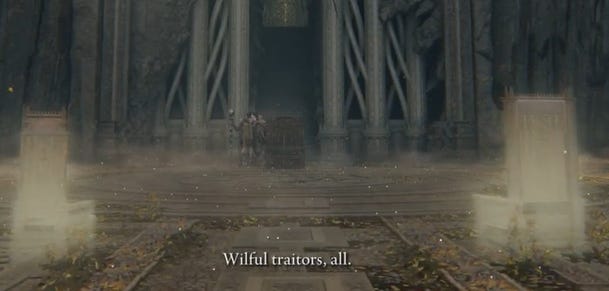
You climb up a mountain and Grace woman yeets herself to burn down the big tree. You’re teleported to the Floating Continent in Final Fantasy 6. You make your way to big blade anime boss and kill him. You go back to the tree. You kill Knows-Nothing Ofnir. You kill a WWE wrestler. You kill Hammer Sephiroth and his Land Whale you have to constantly run toward. You put a face back on a statue.
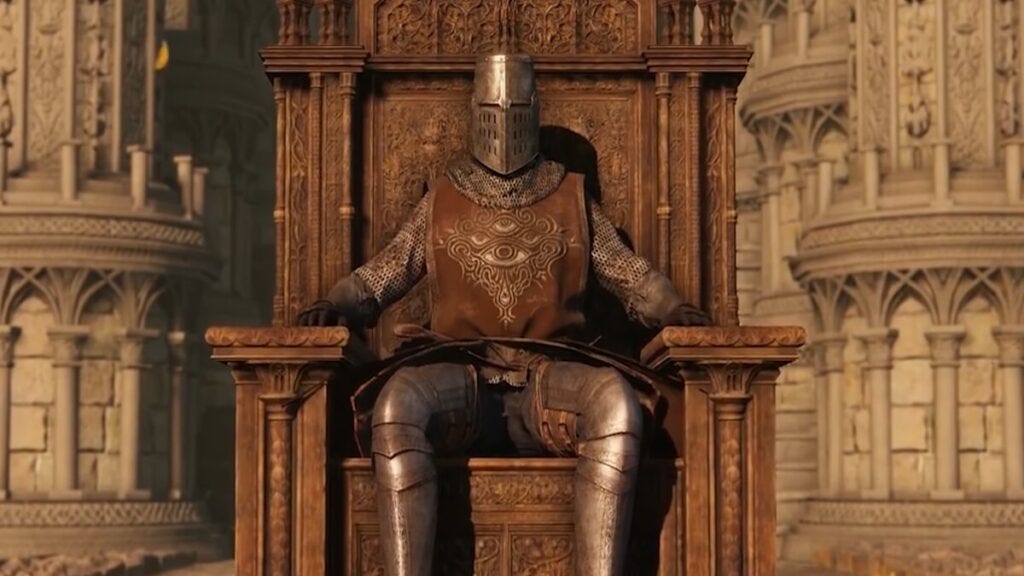
(For most endings) You are treated to the ending of Mass Effect 3. VFX diffuses from the tree, varying in shape and color by ending. There’s some dialogue about how you started the Age of Insert_Uninteresting_Noun and then there’s finally a shot of you, Mr. Elddering, sitting on a throne alone. Roll credits.
That’s it. That’s the main story of Elden Ring.
Well, that’s the non-canon version. There is a secret ending that for me is truly the canon ending for what The Lands Between and its inhabitants deserve:
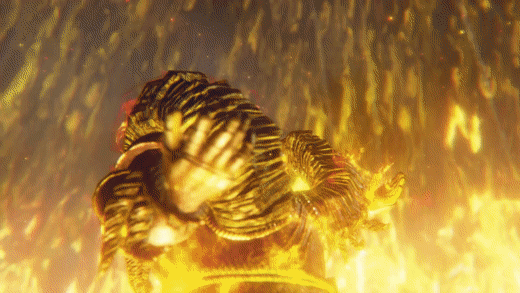
For me, in From Software games, there are very few NPCs that I get emotionally invested in - mostly because they are all jerks. And the ones I do almost invariably die horribly. Elden Ring takes it to the next level. 95% of NPCs try to kill you, belittle you like the disgusting Tarnished-ists they are, or ask “why you no Elden Lord yet” for… reasons?
At least in Sekiro the main quest is you are trying to save a more-or-less innocent child.
The Lands Between is completely unforgiving and and worthy of being burnt to ashes. Fortunately, in my head canon, my player character saves the like 4 NPCs I cared for in the game who didn’t die horribly- Hewg the Blacksmith, the friendly, old variant of merchants, Turtle Pope, and all of Jarburg (this includes Iron Fist Alexander). The rest can burn.
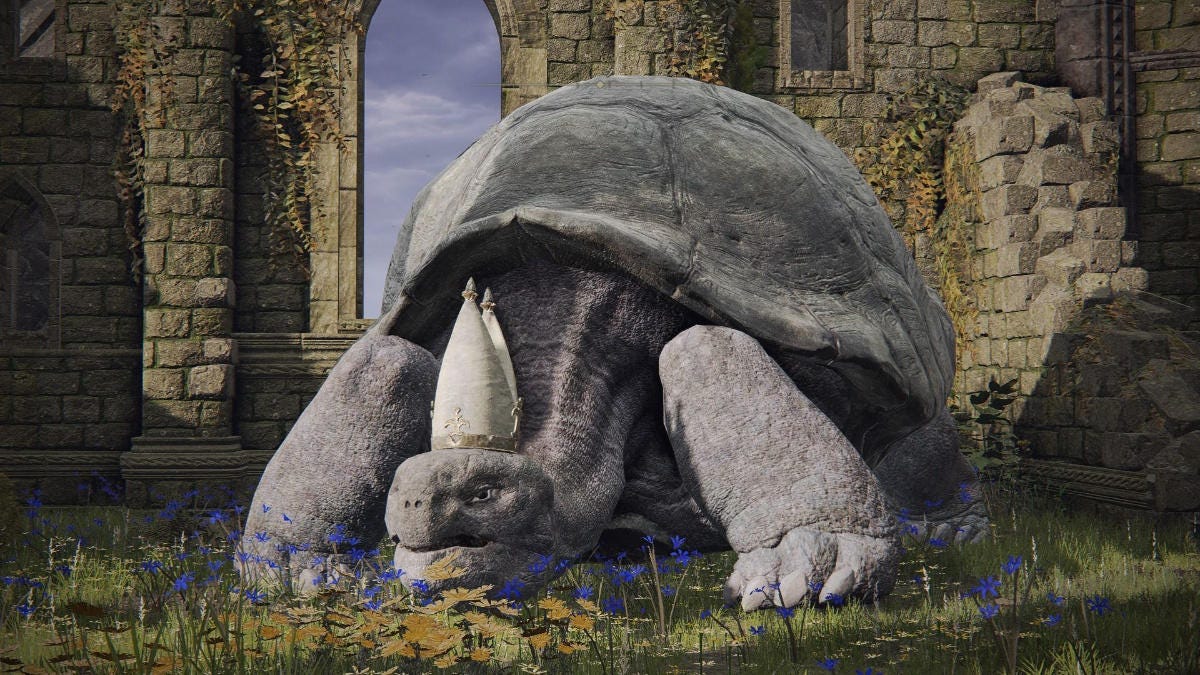
Here’s the thing - everyone can have their own opinion on a game’s story, and that’s fine. And I will come out and admit that I simply don’t much care about main story in FromSoft games. The studio’s unique way of conveying story - the Silent Protagonist wandering a broken world, exhausting dialogue with NPCs, captively listening to narrative exposition from strangers and enemies, and discerning clues of the story and lore from the environment - is completely valid.
I suspect if you sit the median gamer down who had beaten The Witcher 3 and Elden Ring - assume contemporaneously and with no prior knowledge - that gamer would almost certainly be able to explain the main plot and key characters of the The Witcher 3 - Ciri, Geralt, Wild Hunt, etc. - and absolutely butcher the story of Elden Ring like an episode of Drunk History.
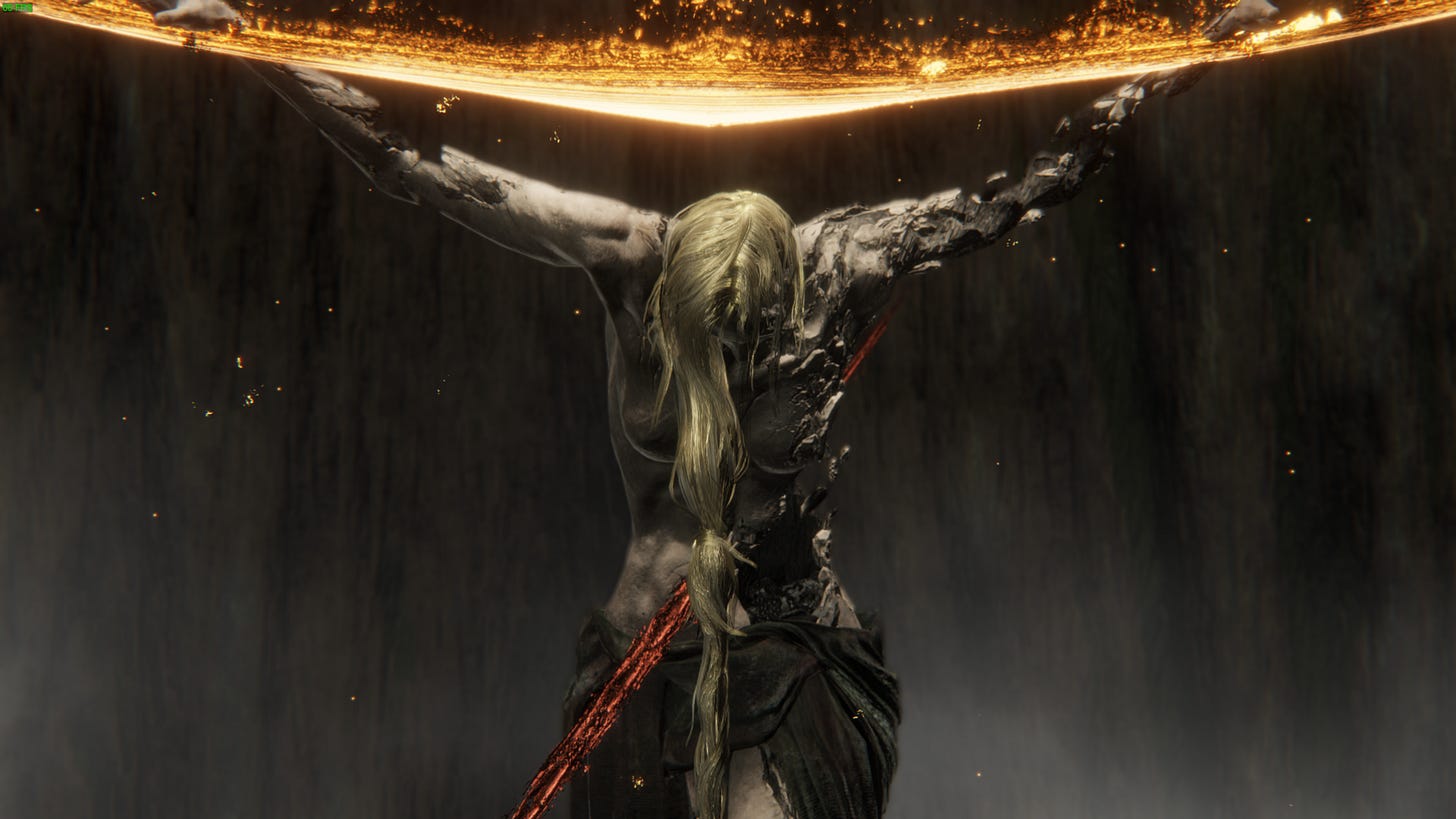
But as in the framework of Elden Ring as a difficulty sandbox, I think all Soulsborne games are story sandboxes as well. The world of Elden Ring has compelling stories peppered throughout The Lands Between. Soulsborne stories are NOT meant to be consumed in a coherent, linear fashion like open world RPG contemporaries. Instead, stories are revealed to the player through careful observation and interaction with the world. As the player invests more time and thought into the world, its inhabitants, and its myriad quests, a spider web of loose lore accumulates and creates a world that is more alive, interactive, and ultimately just as satisfying as a compelling linear story. I term this process contextual worldbuilding.
Back in the merry land of Caelid, I had chanced upon a once-in-a-playthrough opportunity. As I rode toward Redmane Castle to find some good loot, I found myself beset by 3 giant dogs snapping desperately at Torrent’s legs. I spurred Torrent onward toward the castle until, suddenly, a horn sounded and soldiers poured out of hiding places to attack the giant dogs. I booked it on through and rested at the nearby Site of Grace. Then, thinking I was clever, I continually led the helldogs to the soldiers, dashing around and smacking the members of whichever side was winning the melee, then finishing off the survivors.
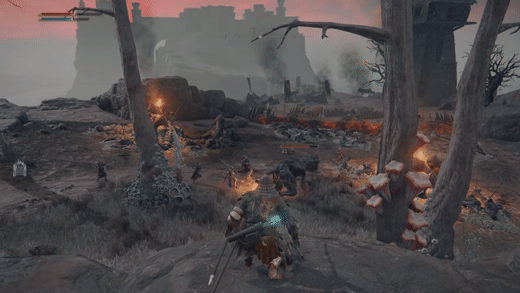
I figured I had found a great rune farm of pitting enemy NPCs against other enemy NPCs, but after my first playthrough - and forevermore - when I encounter this scene I slaughter all of those rotten death puppies and book it away from the Redmane soldiers. These are simple men protecting my lord and savior General Radahn from the unholy scourge wrought by Malenia - that bitch. What had originally been a convenient way to power up my character had evolved from context and pathos into a miniature crusade against a despised demi-god.
In open world content-driven RPGs, contextual worldbuilding increases the richness of repeated engagement with content based on the player’s accumulated knowledge and experiences. First playthroughs generally provide little context on the people, places, and things the player confronts, but as the player accumulates context, further playthroughs benefit from the player’s comprehension and appreciation. From Software in particular creates context via side quests and NPC interactions. For example, I was unaware of Radahn’s awesomeness until I had joined his “festival,” spoken with Ofnir the Asshole, and opened up the internet to confront his legions of simps. After acquiring all of that context, I’m something of a Radahn simp myself.
From Software has a very dedicated lore following. And by that I mean intrepid Redditors “invest” weeks of their lives explaining highly esoteric lore that the From Software fandom benefits from and without which the vast majority of players would understand very little about the deep worlds the developer has created. Reading this summation of Elden Ring’s lore taught me more about The Lands Between than all of the narrative exposition and NPC dialogue had imparted on me in 150 hours of playtime.
Quests
I’m not going to even mince words with this section: From Softwares quests are poorly designed and executed. Taking pride in randomly stumbling upon NPCs in a 17 part goose hunt that rewards some obscure token that can then be used to elicit a random hidden set of dialogue from an NPC is bullshit.
A large part of the Dark Souls and single-player RPG community makes it a point to avoid the internet and spoilers in order to best enjoy their game experience and the surprises they will encounter. In the initial 2 weeks following release I was mostly scrupulous in this regard, but it became unsustainable after I had completed the main story as I searched for the rest of the content. If I wanted half of the equipment and talismans currently on my main character, I would never have found them without the internet. The rest I had happily stumbled upon, which should be the goal in a single-player open world experience predicated on the enjoyment of discovery.
I wanted bull-goat boi suit. I’d have to consult the court astrologer to sift through turtle shell fragments to figure out where the fuck Patches went. Patches’ questline has 13 steps, none of which are expressly communicated to the player. FromSoft please at least attempt to allow players to complete significant quest lines without consulting the Fextralife Wiki.
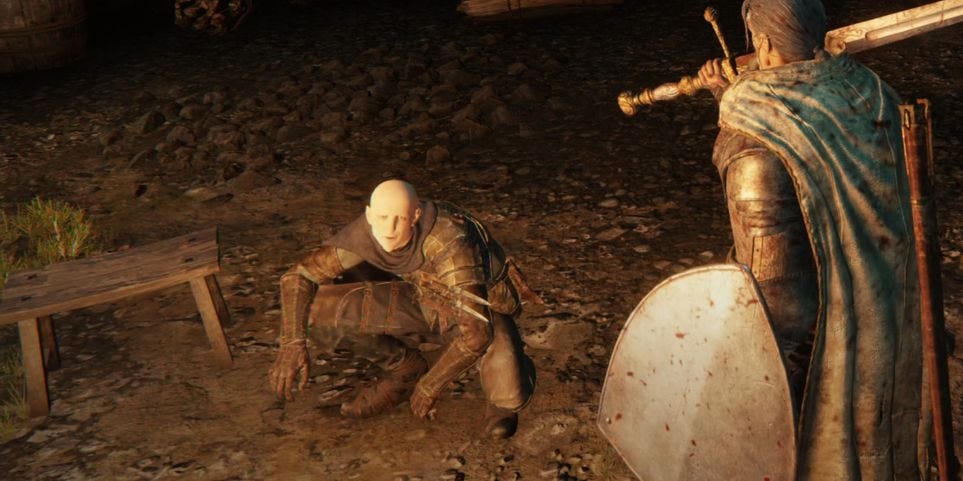
Imagine a world with The Witcher 3-quality quest design coupled with Elden Ring’s worldbuilding and combat experience. Imagine.
Parting Thoughts
Rather than rehashing my initial takeaways, I wanted to use this final section to implore anyone who has a suitable platform and whose interest was remotely piqued by this article to play this game. Not only is it a work of art and an incredible interactive experience, but this game will be an integral component of the core gamer lexicon for 5 years to come. You don’t want to be some maidenless doof when your friends wax nostalgically on this cultural moment in gaming.
Finally, I wanted to re-bump the upcoming parts in this series. In the coming weeks, I will be curating a selection of influencers, reviewers, etc. from both China and the West to offer comparison of how these different gaming populations view Elden Ring. I will also showcase some of my favorite memes, discuss the social aspects and phenomena of Elden Ring and its community, and propose some social / marketing innovations that might befit a next Soulsborne entry. Following that article, the final part will explore business performance of Elden Ring, recommendations for product innovations, an analysis of From Software’s position within the industry, and speculation of how Elden Ring and From Software will influence the industry in the medium term.
Thank you for slogging through this. If you disagree with any of my entirely correct opinions, feel free to comment on the article, on LinkedIn, etc. and tell me and other readers what you think!
And remember…





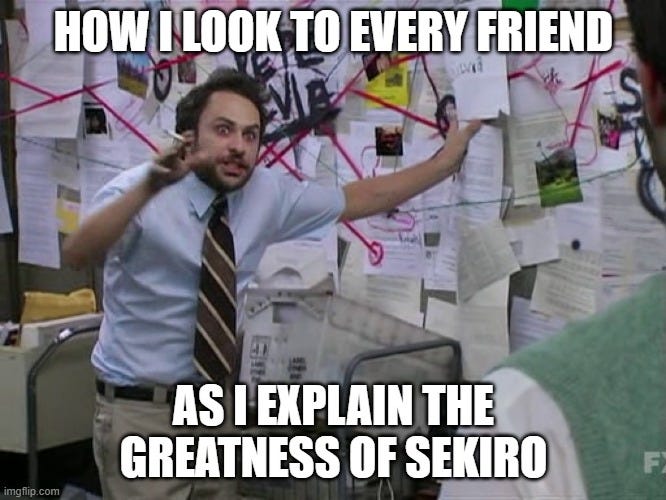
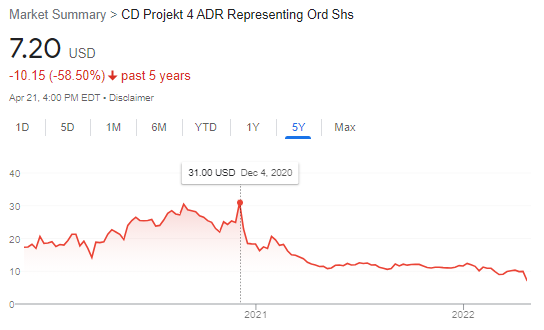
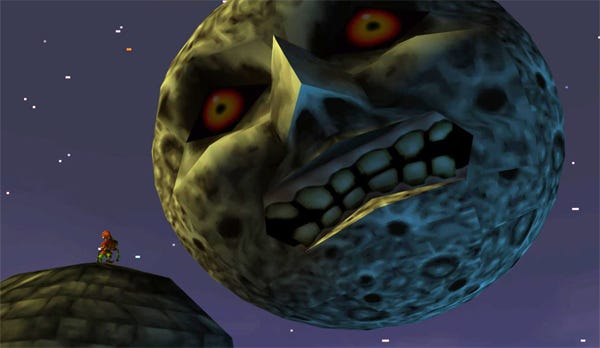
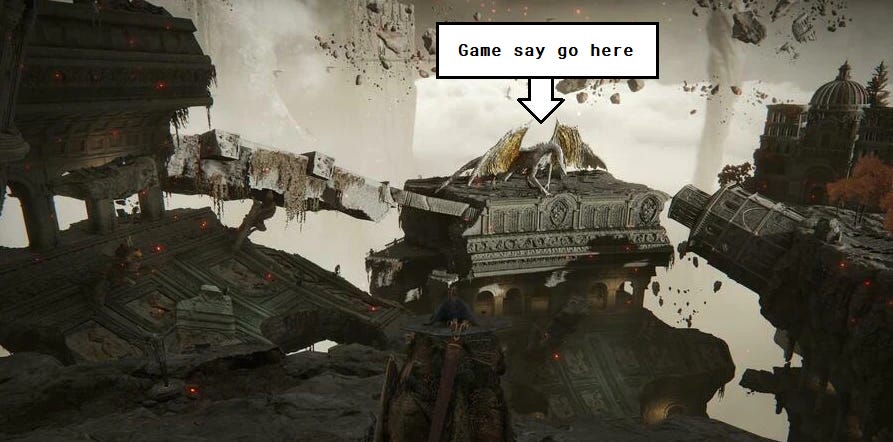
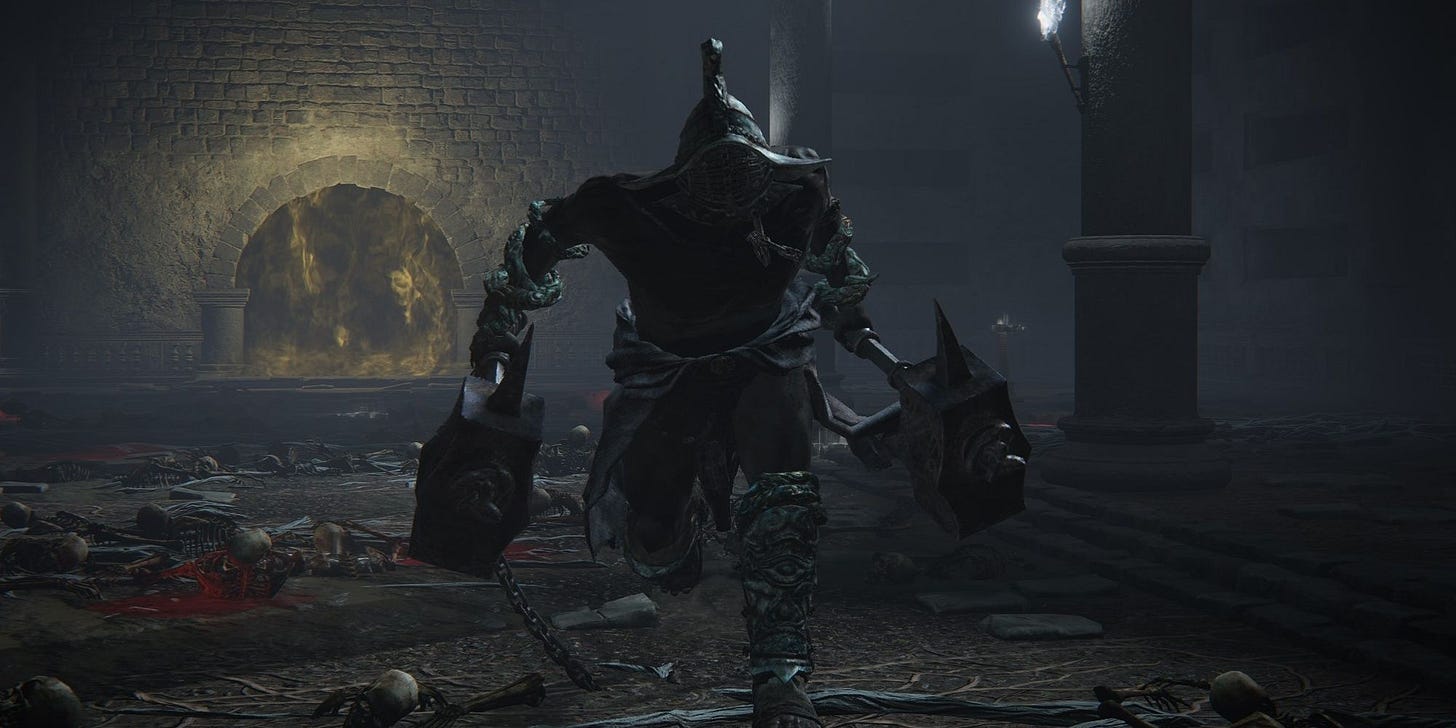
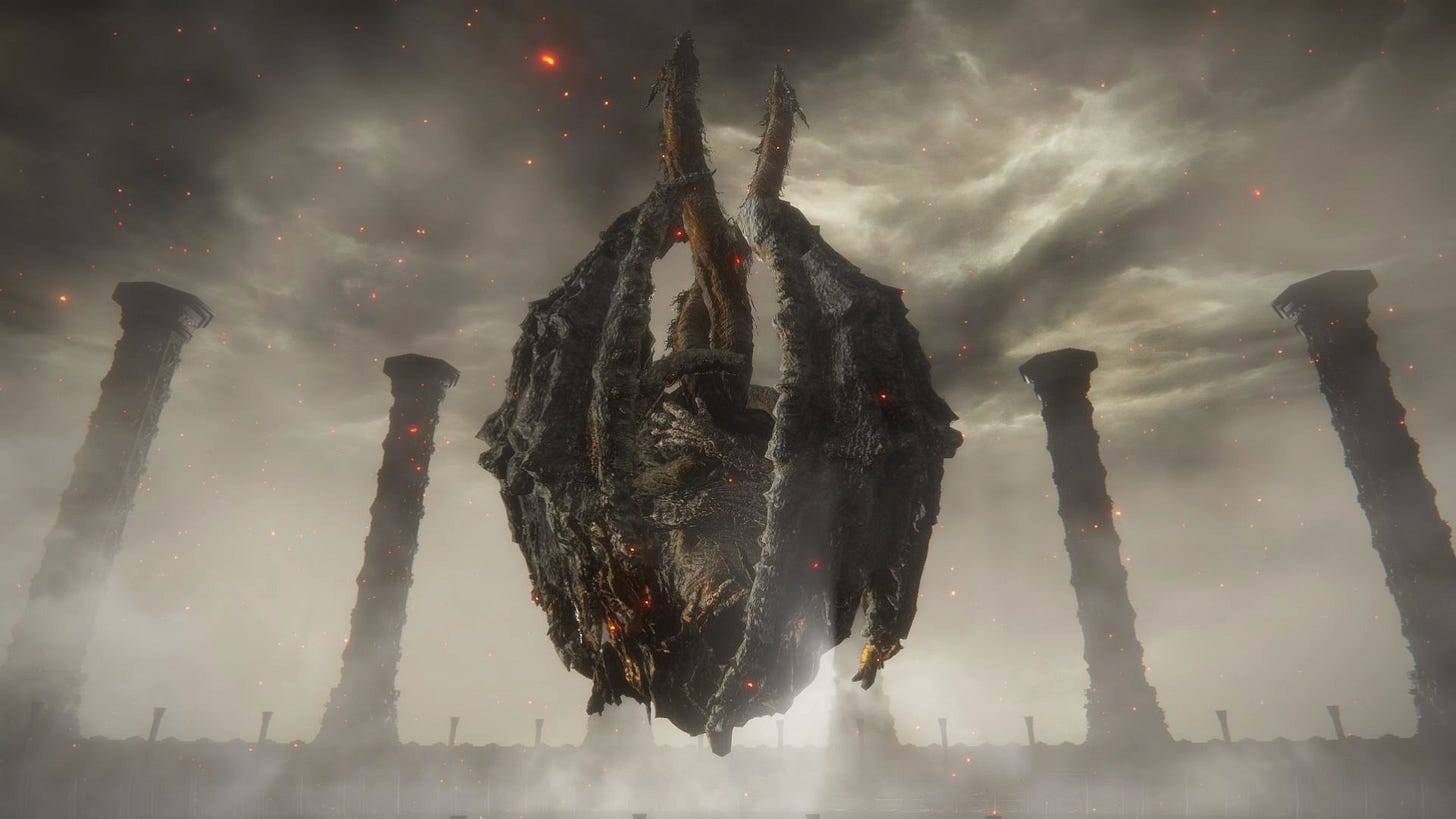
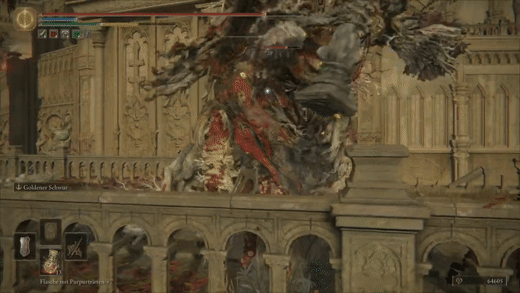
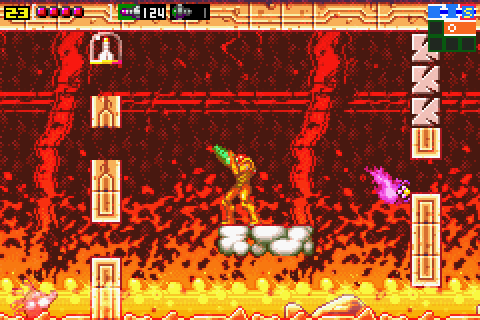
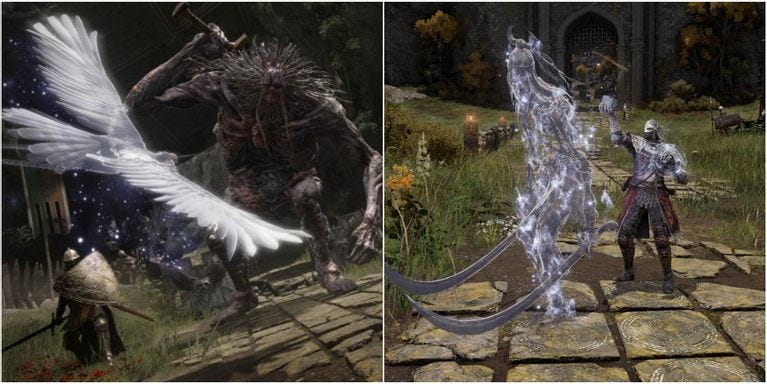
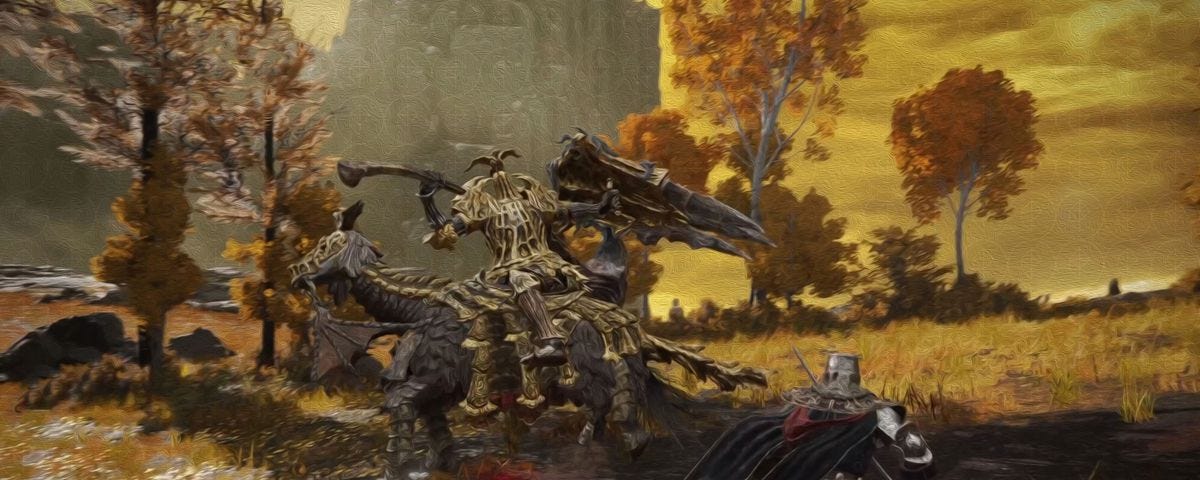
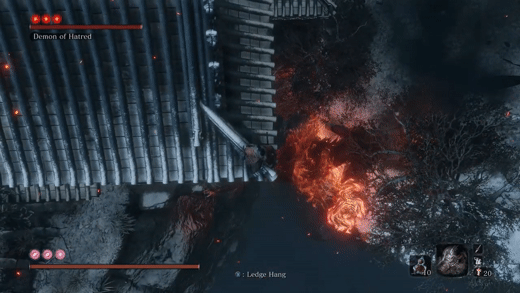
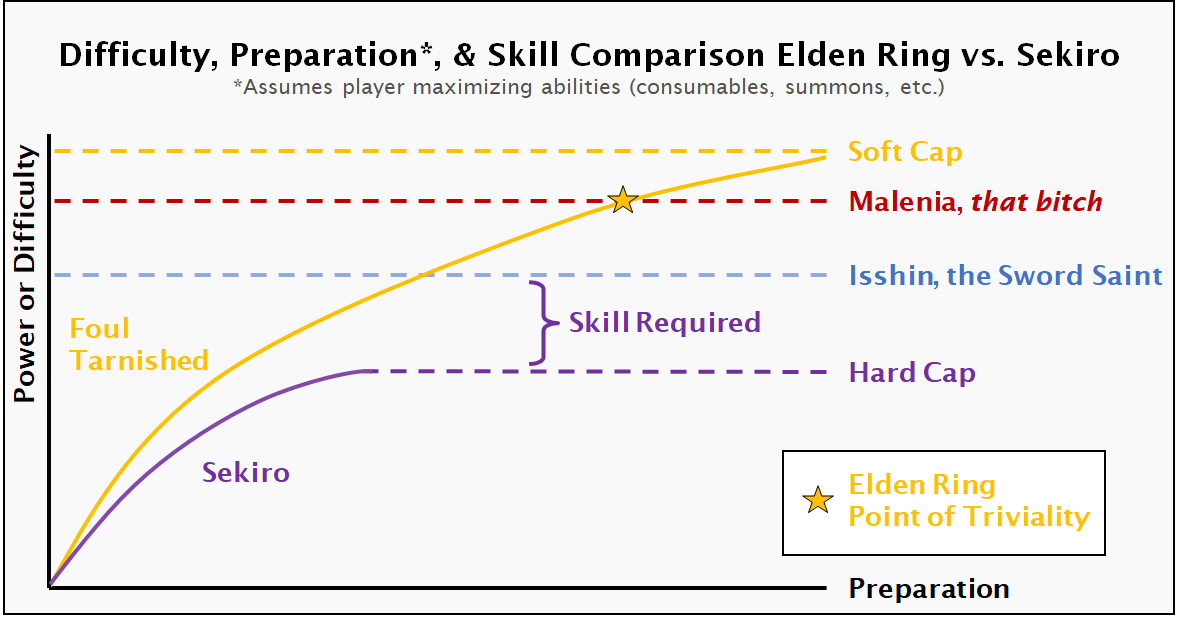
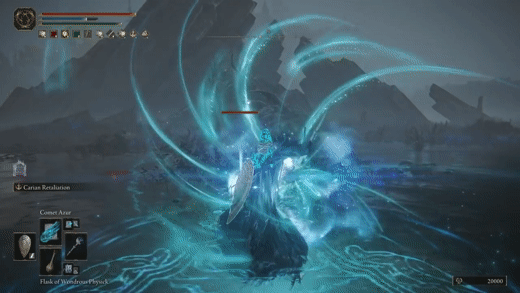
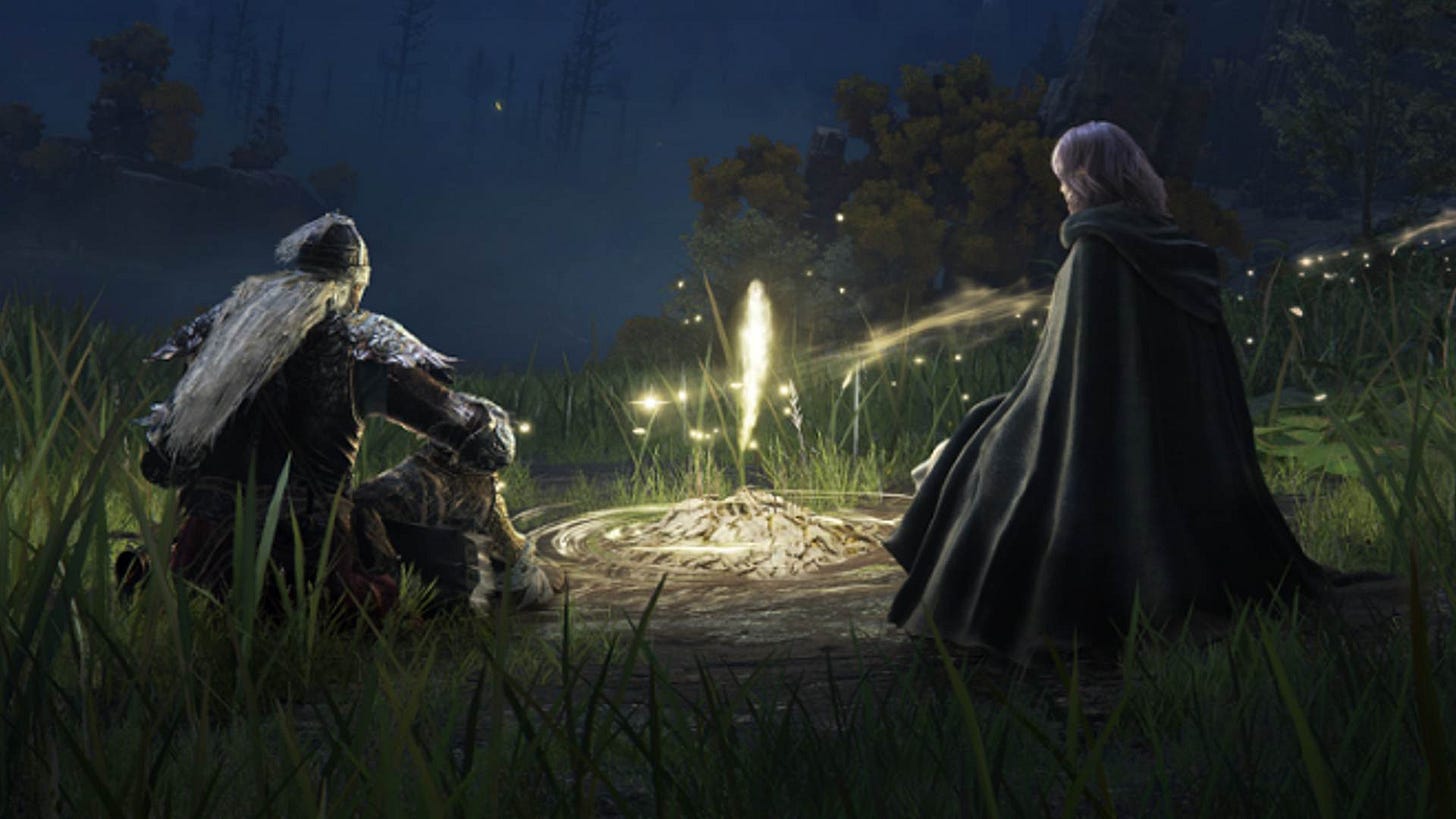
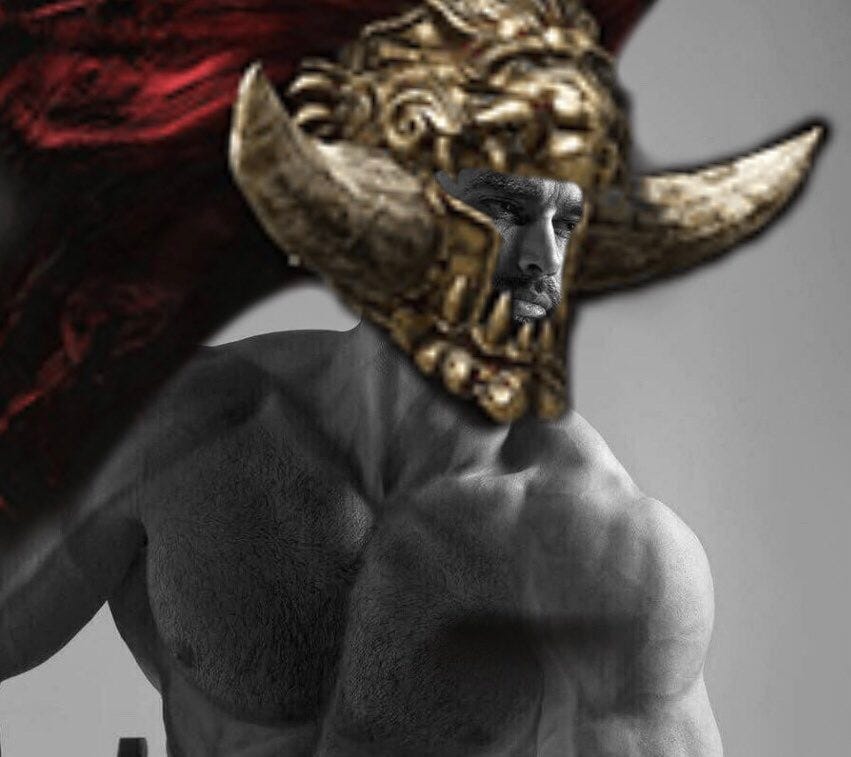
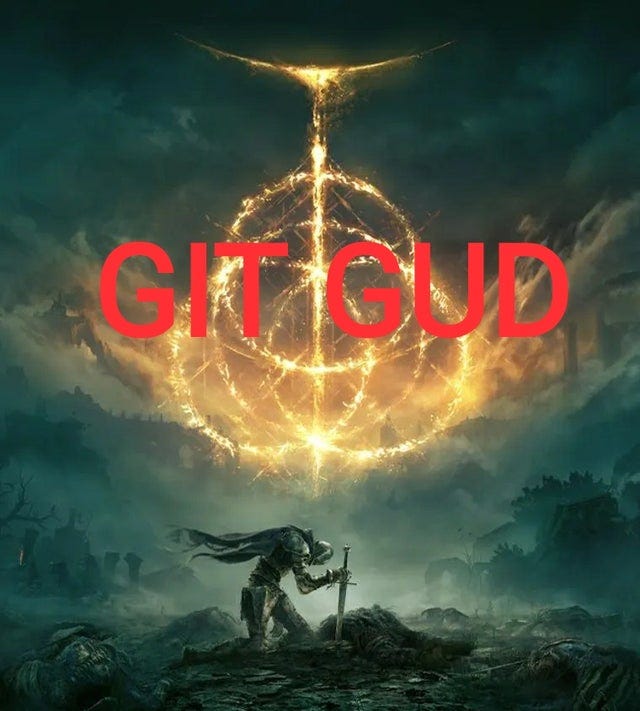
wow. still not gonna play it, but impressive tome